50 years later, images from the Watts riots still startle
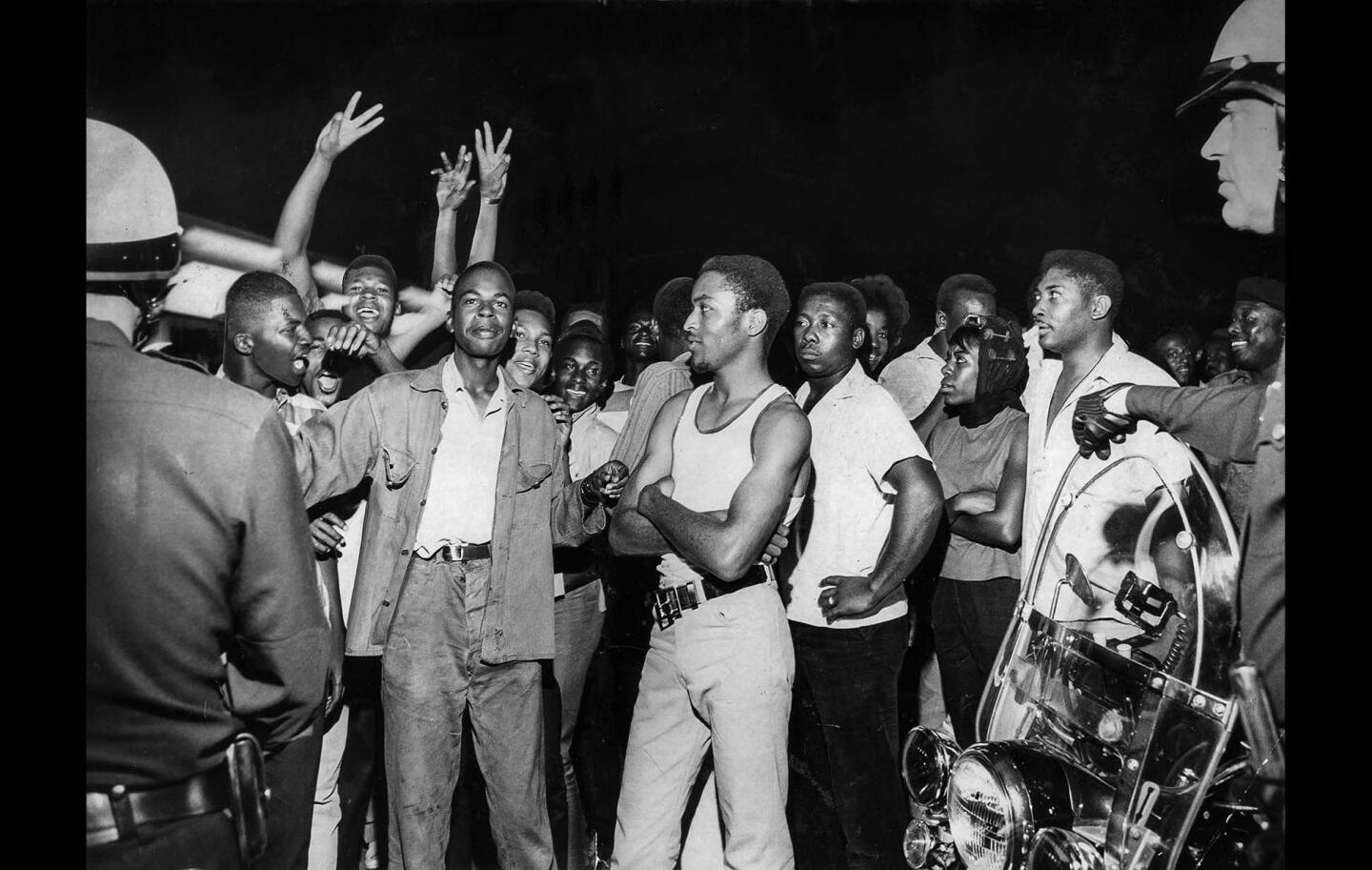
Aug. 12, 1965: A crowd gathers at Imperial Highway and Avalon Boulevard in South Los Angeles in the early morning just before violence broke out.
(Don Cormier / Los Angeles Times)A short article in the Aug. 11, 2006, Los Angeles Times reported on the origins of the 1965 riots in Los Angeles’ Watts neighborhood:
“Aug. 11, 1965: At 7:19 p.m. in Watts, a California Highway Patrol motorcycle officer named Lee Minikus pulled over 21-year-old Marquette Frye on suspicion of drunk driving. Minikus was white. Frye was black. When the two scuffled at Avalon Boulevard and 116th Street, a crowd gathered.
“That night, 1,000 people rioted in Watts, some throwing bricks, rocks and bottles at police and motorists, The Times reported. About 100 officers were brought in to attempt ‘to quell the five-hour melee by sealing off an eight-block area,’ the newspaper said.
“‘It was just a night to throw rocks at policemen,’ Deputy Police Chief Roger Murdock, who headed the riot squads, told The Times.
Advertisement
“What followed was six days of rioting -- in which 34 people died, more than 1,000 were injured and property damage was estimated at $40 million.”
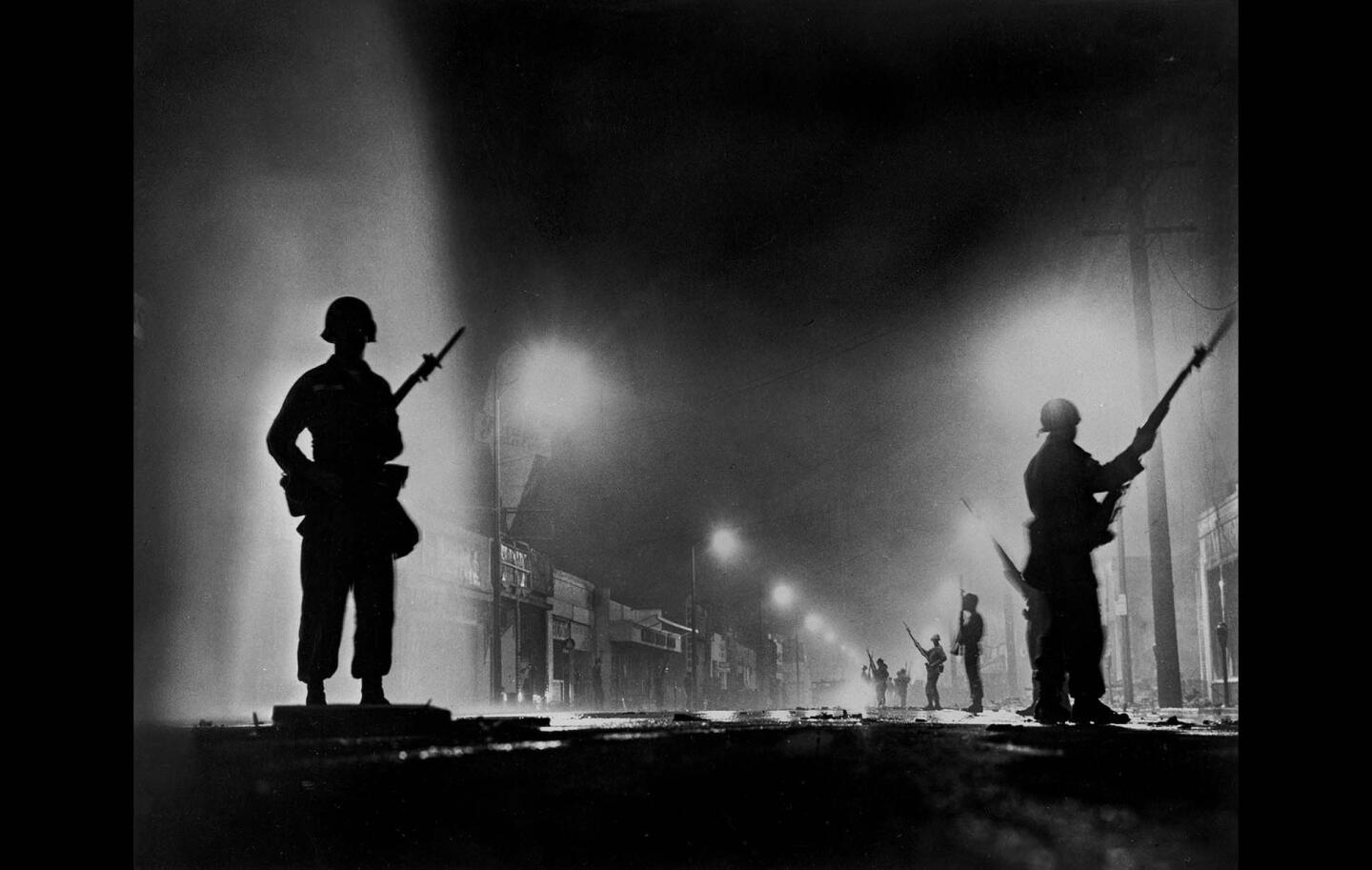
Aug. 13, 1965: National Guard troops secure a stretch of 103rd Street, dubbed Charcoal Alley, during the Watts riots. This photo was published on the front page of the Aug. 14, 1965, edition of the Los Angeles Times.
(John Malmin / Los Angeles Times)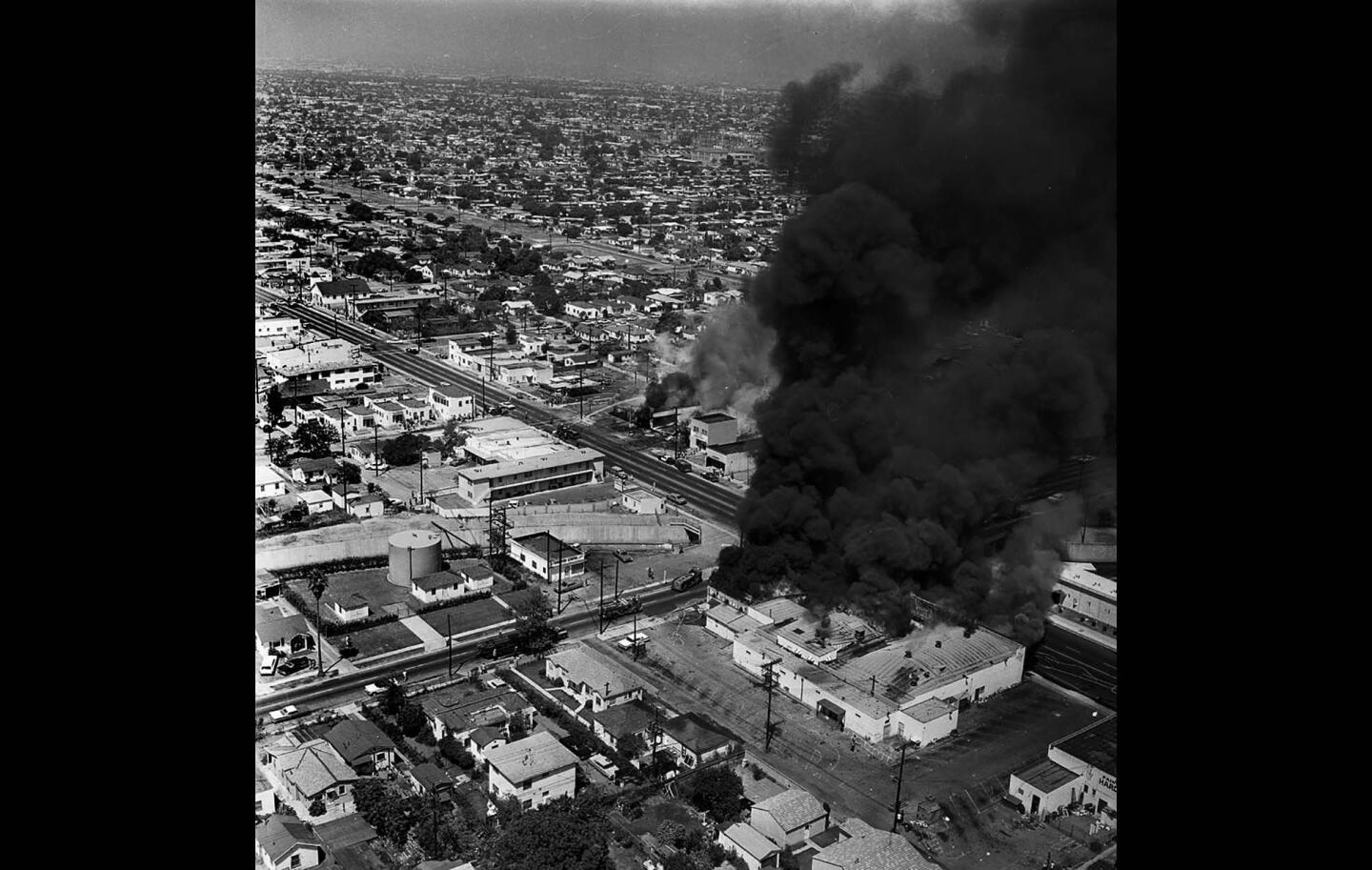
Aug. 13, 1965: An aerial view of two buildings on fire on Avalon Boulevard at 107th Street, left, and at 108th Street during the Watts riots.
(George Fry / Los Angeles Times Archive/UCLA)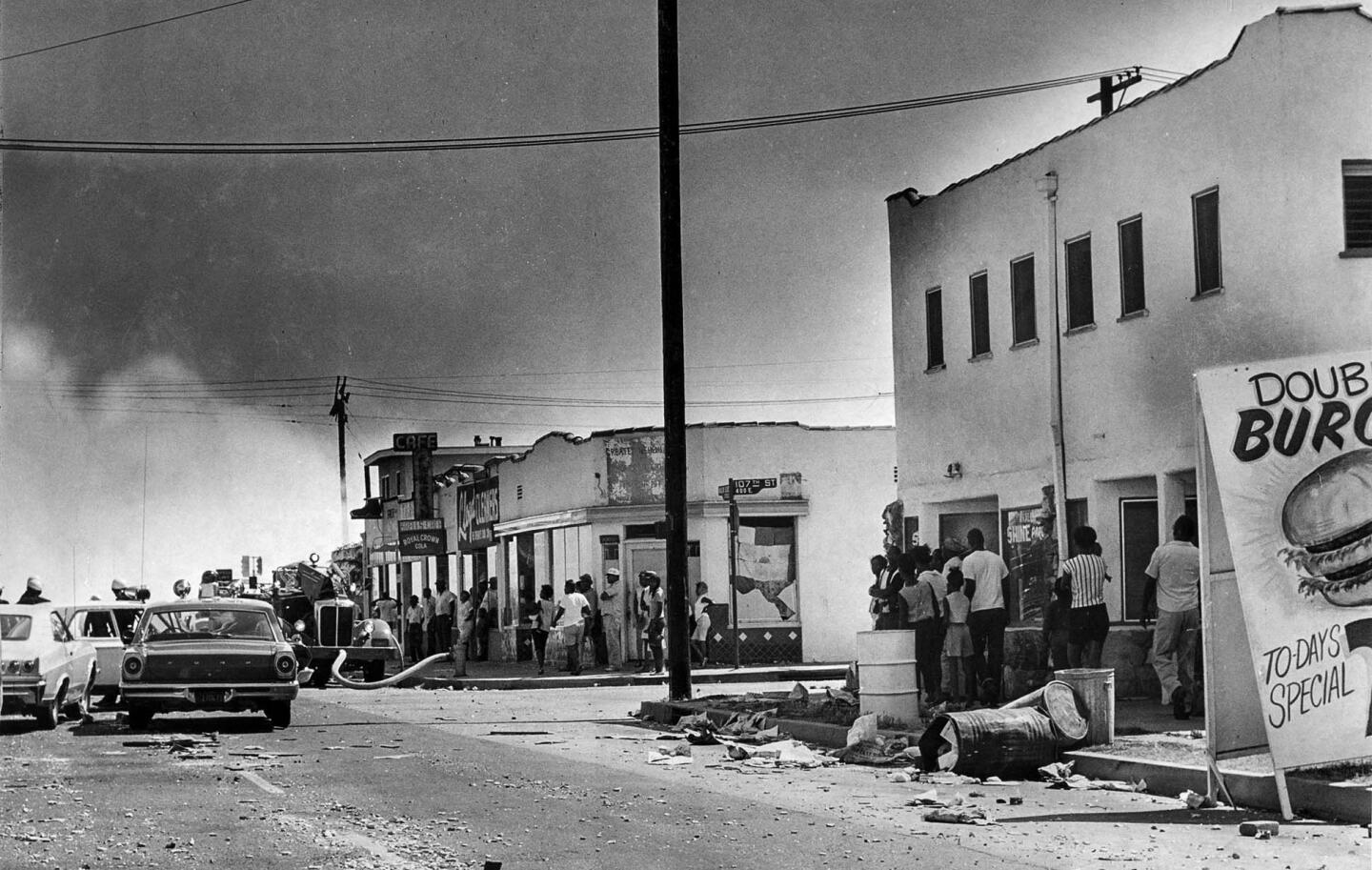
Aug. 13, 1965: Debis litters Avalon Boulevard near 105th Street as pedestrians watch smoke rise from a building at 108th Street.
(Larry Sharkey / Los Angeles Times)Advertisement
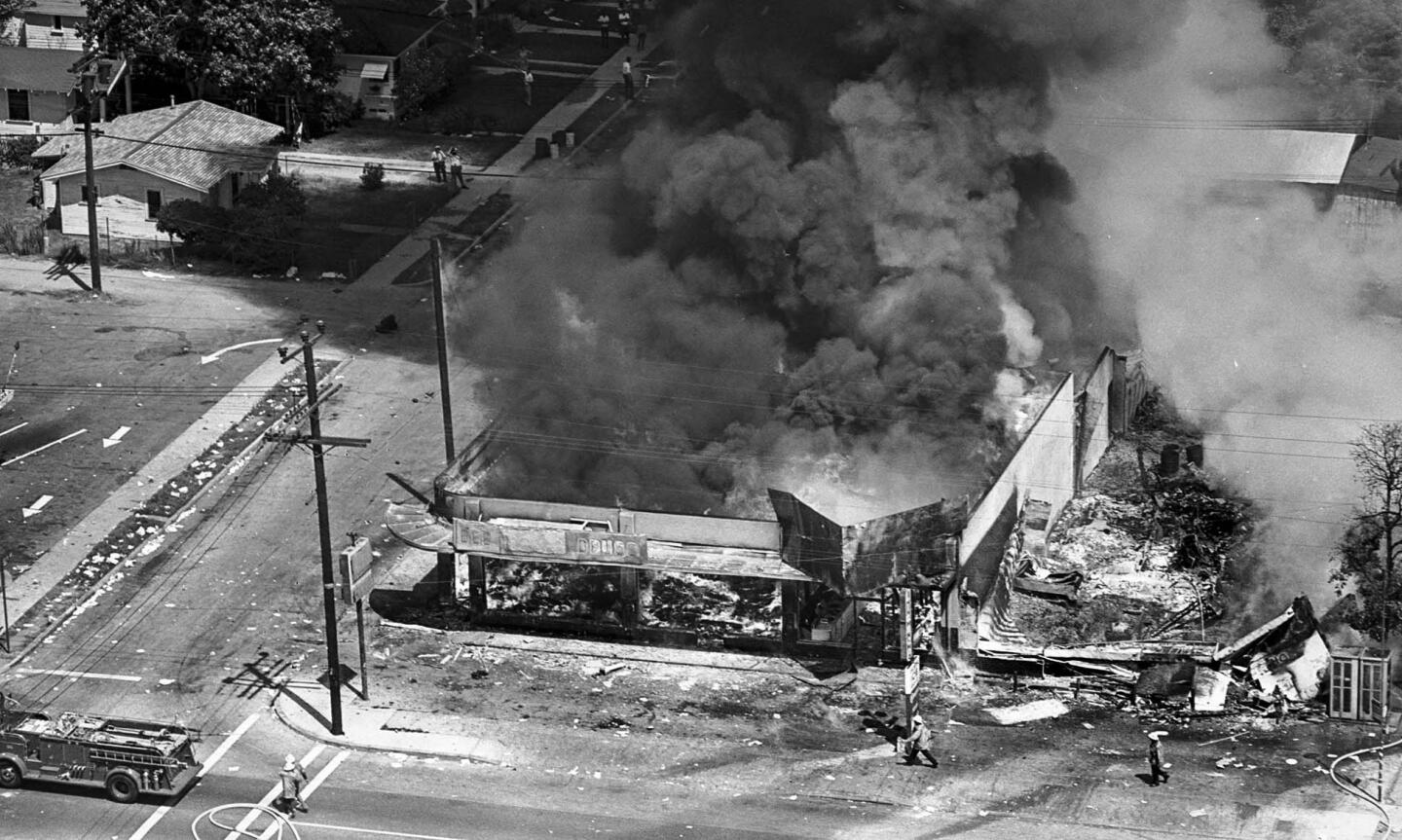
Aug. 13, 1965: A drug store burns at 107th Street and Avalon Boulevard during the Watts riots.
(George Fry / Los Angeles Times)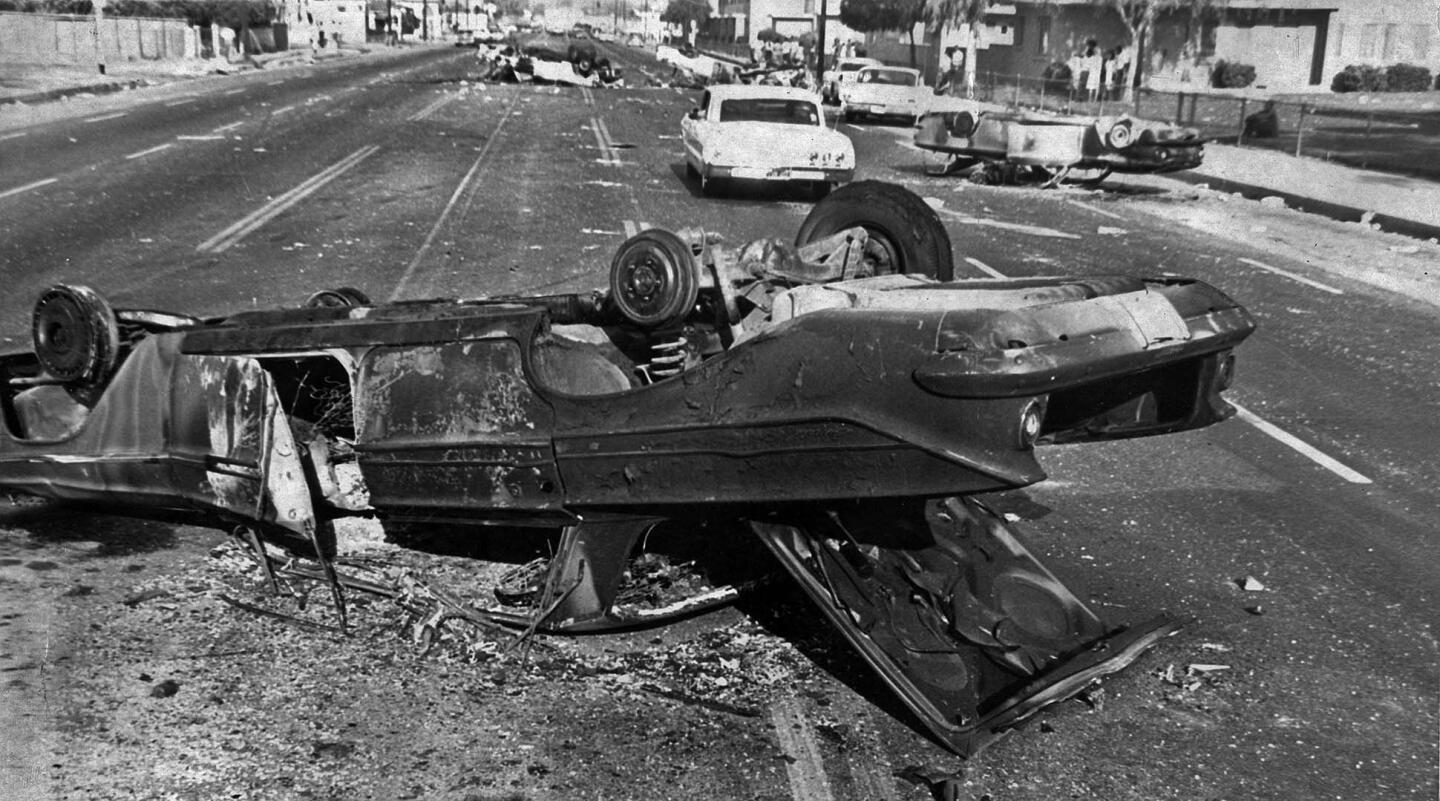
Aug. 13, 1965: A burned car is overturned by rioters on Imperial Highway near Avalon Boulevard during the Watts riots.
(Ray Graham / Los Angeles Times)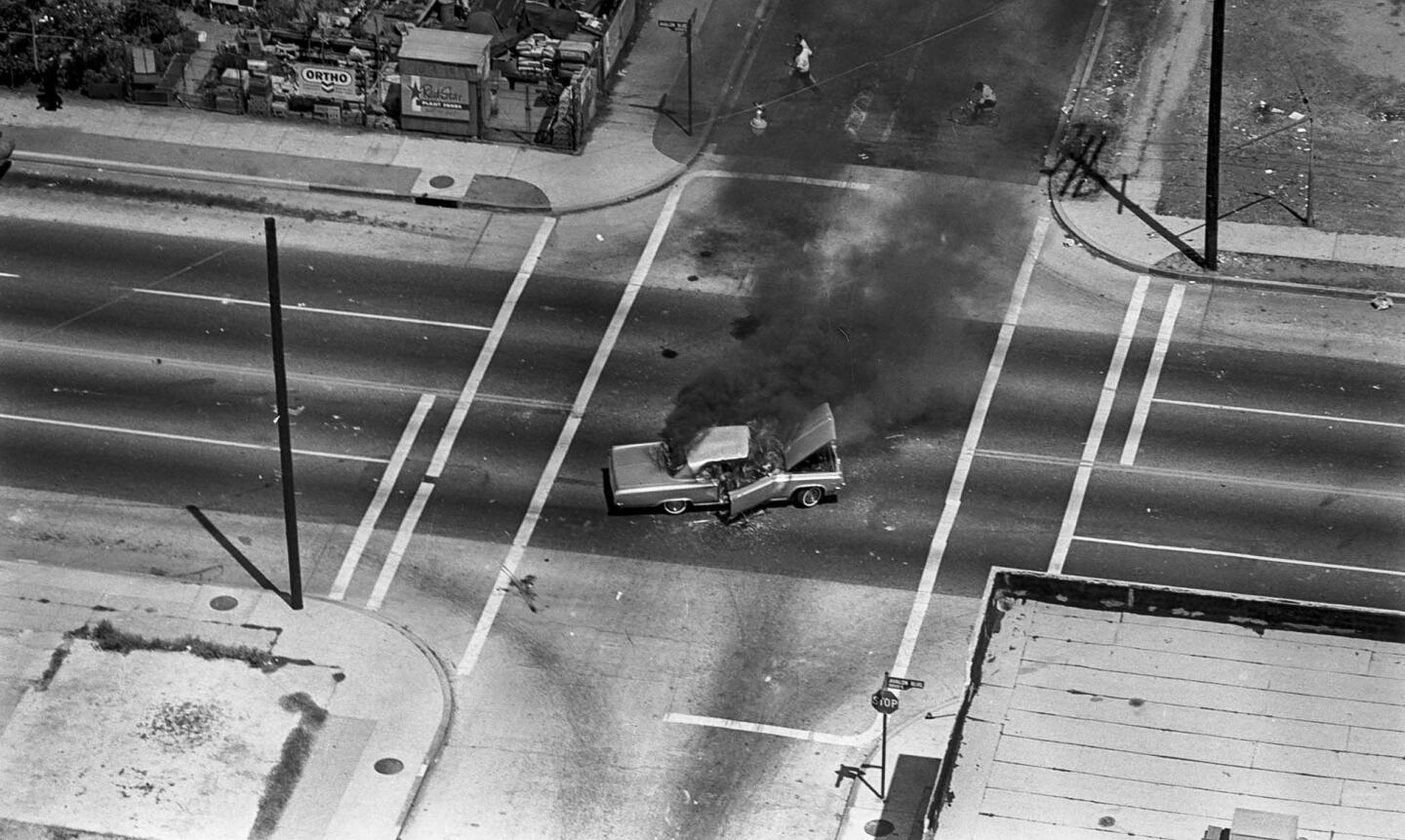
Aug. 13, 1965: A car burns on Avalon Boulvard during the Watts riots.
(George Fry / Los Angeles Times)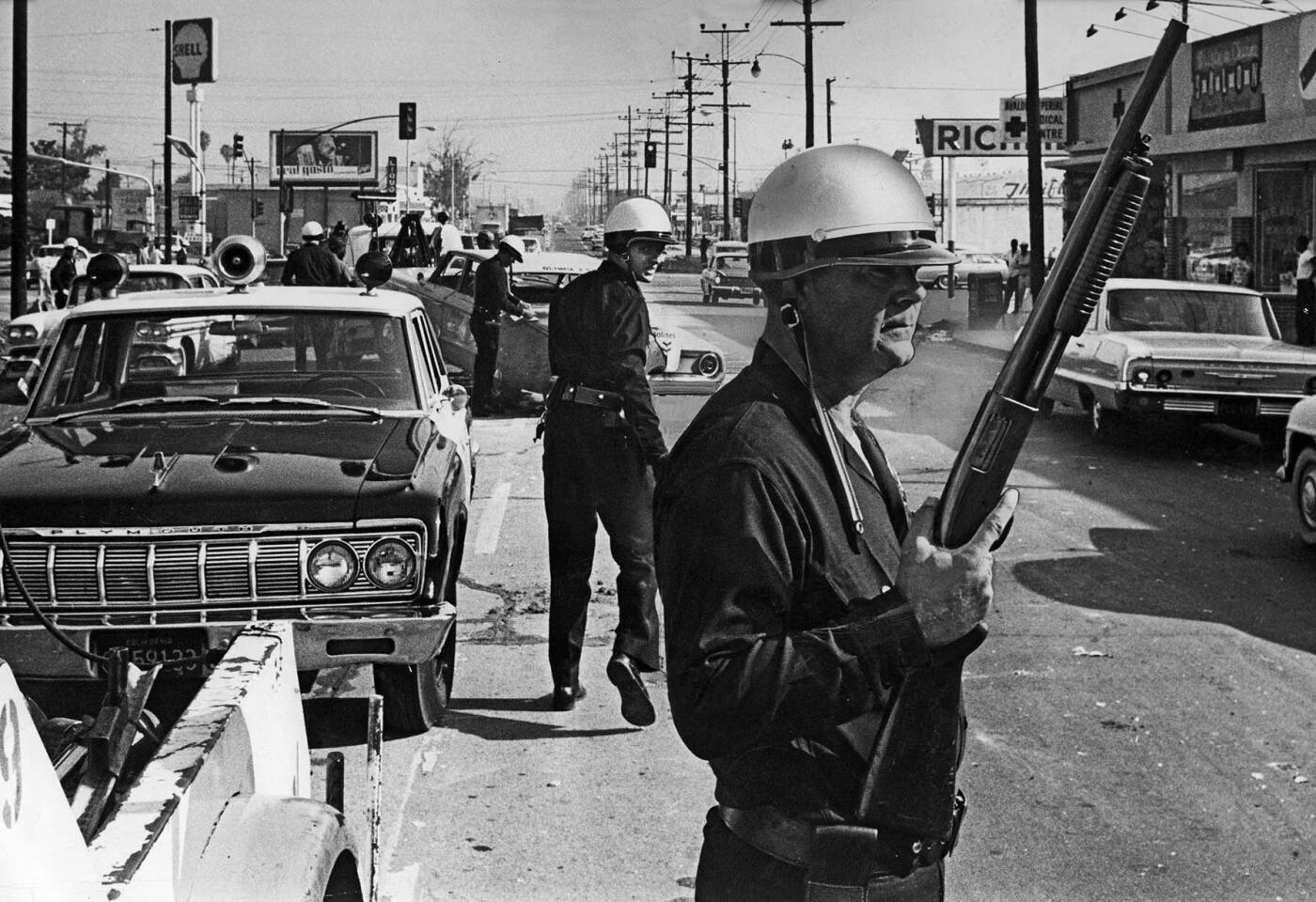
Aug. 13, 1965: Los Angeles police officers stand guard as debris is cleared from Avalon Boulvard and Imperial Highway, one of the trouble spots during the Watts riots.
(Ray Graham / Los Angeles Times)Advertisement
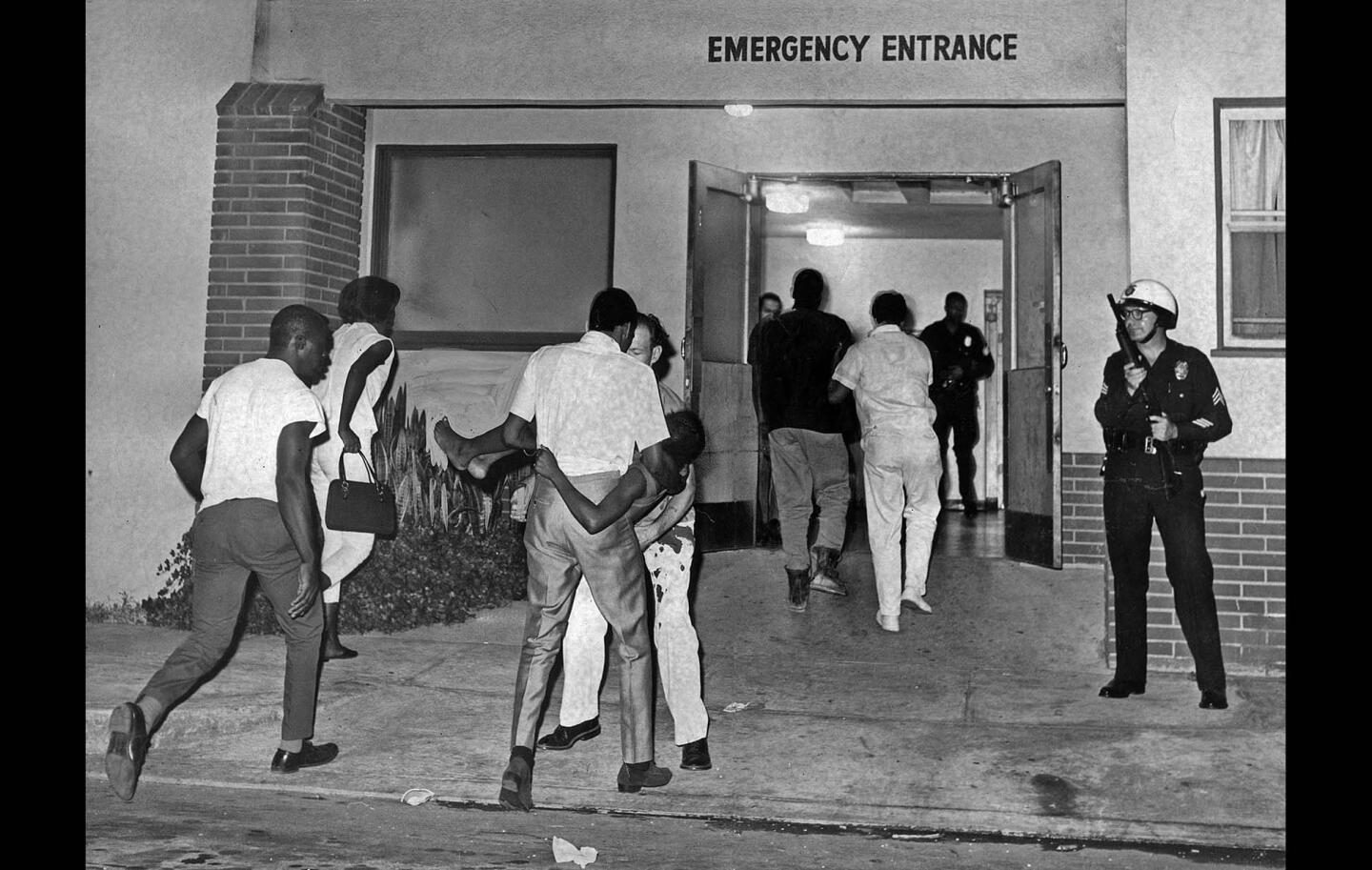
Aug. 13, 1965: A girl injured during the Watts riots is carried into Oak Park Hospital.
(Jack Gaunt / Los Angeles Times)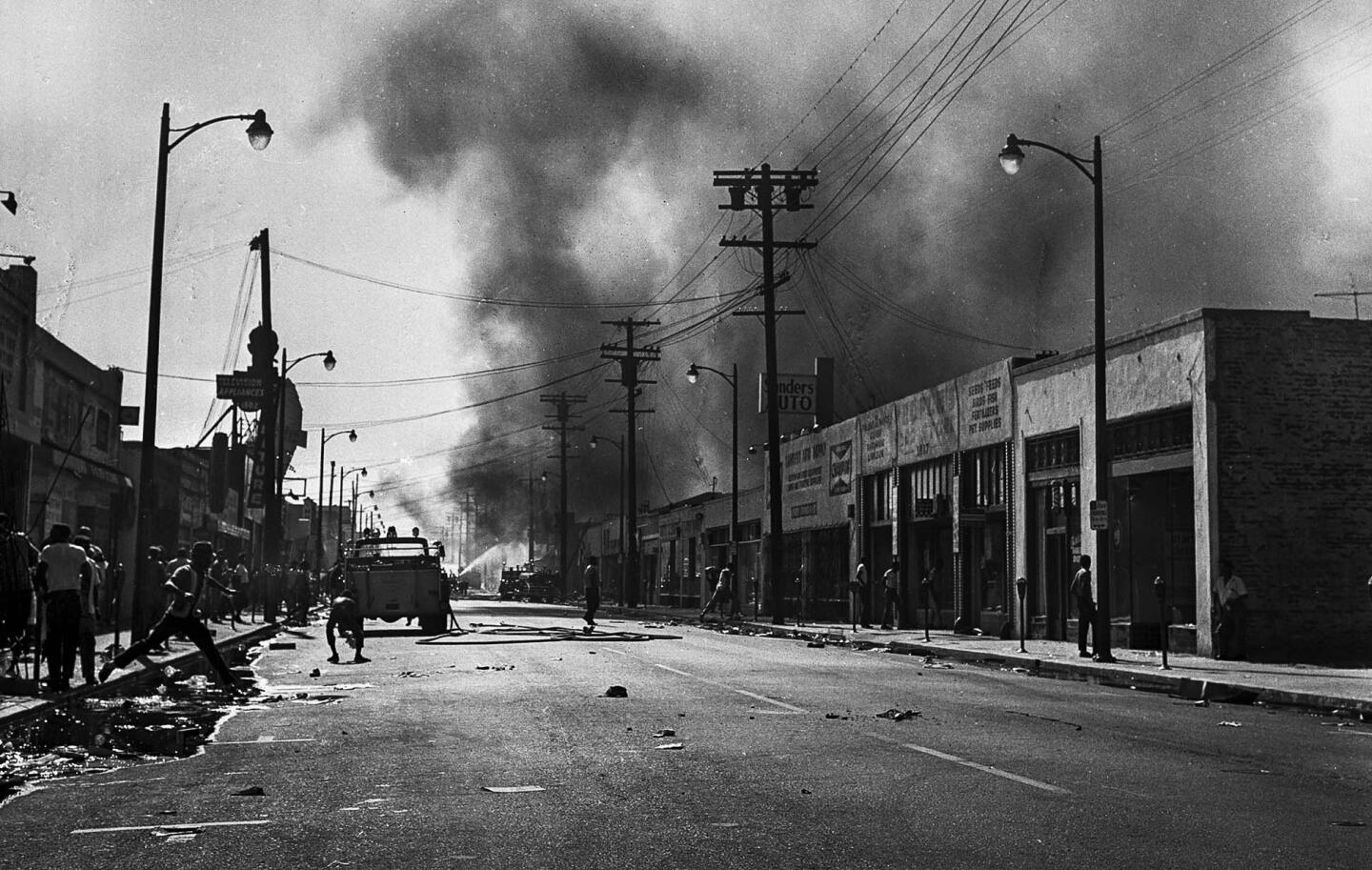
Aug. 13, 1965: Smoke rises from buildings on 103rd Street during the Watts riots.
(Larry Sharkey / Los Angeles Times)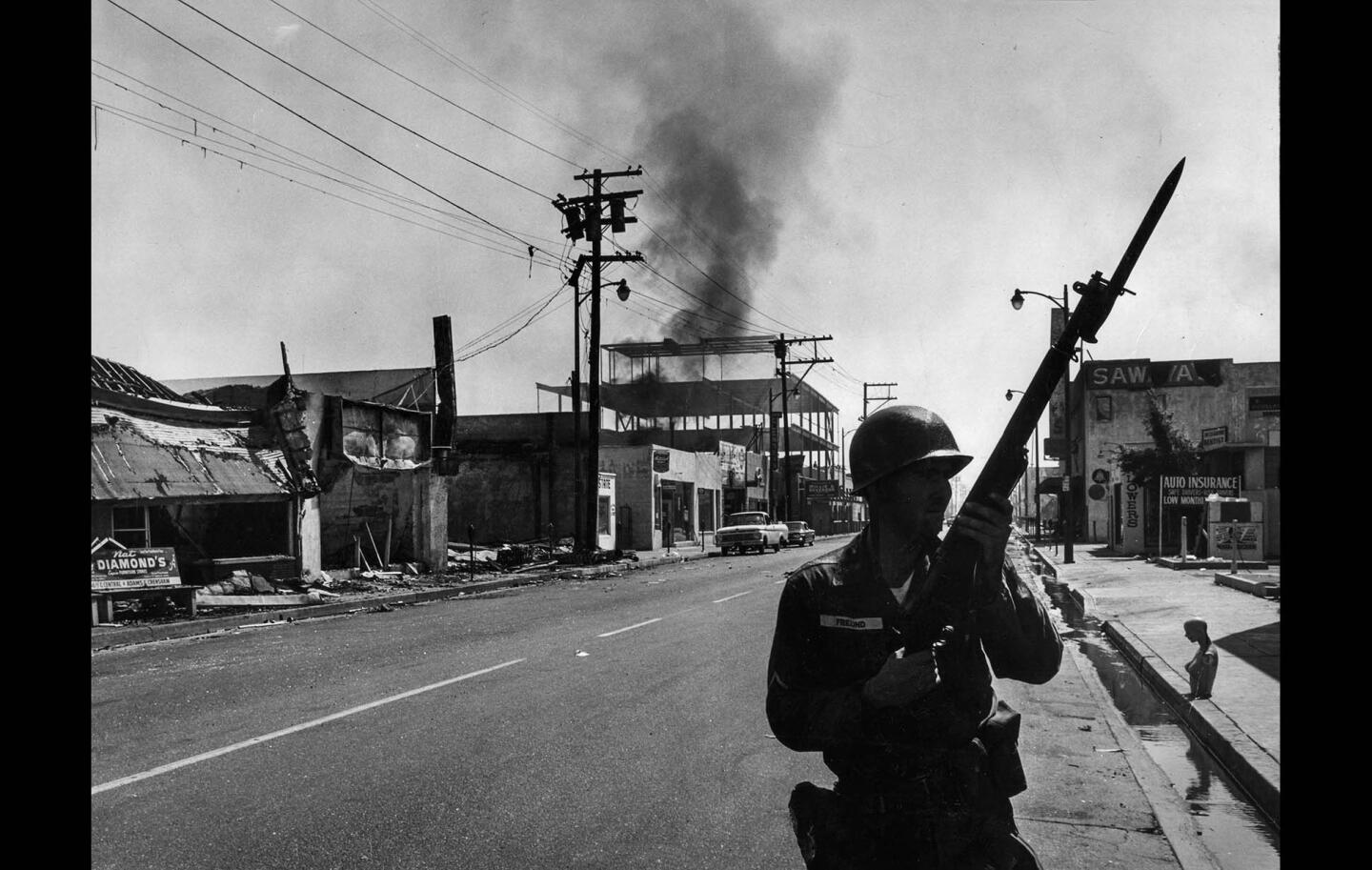
Aug. 14, 1965: A California National Guardsman patrols 103rd Street near Compton Avenue in the Watts business district.
(Ray Graham / Los Angeles Times)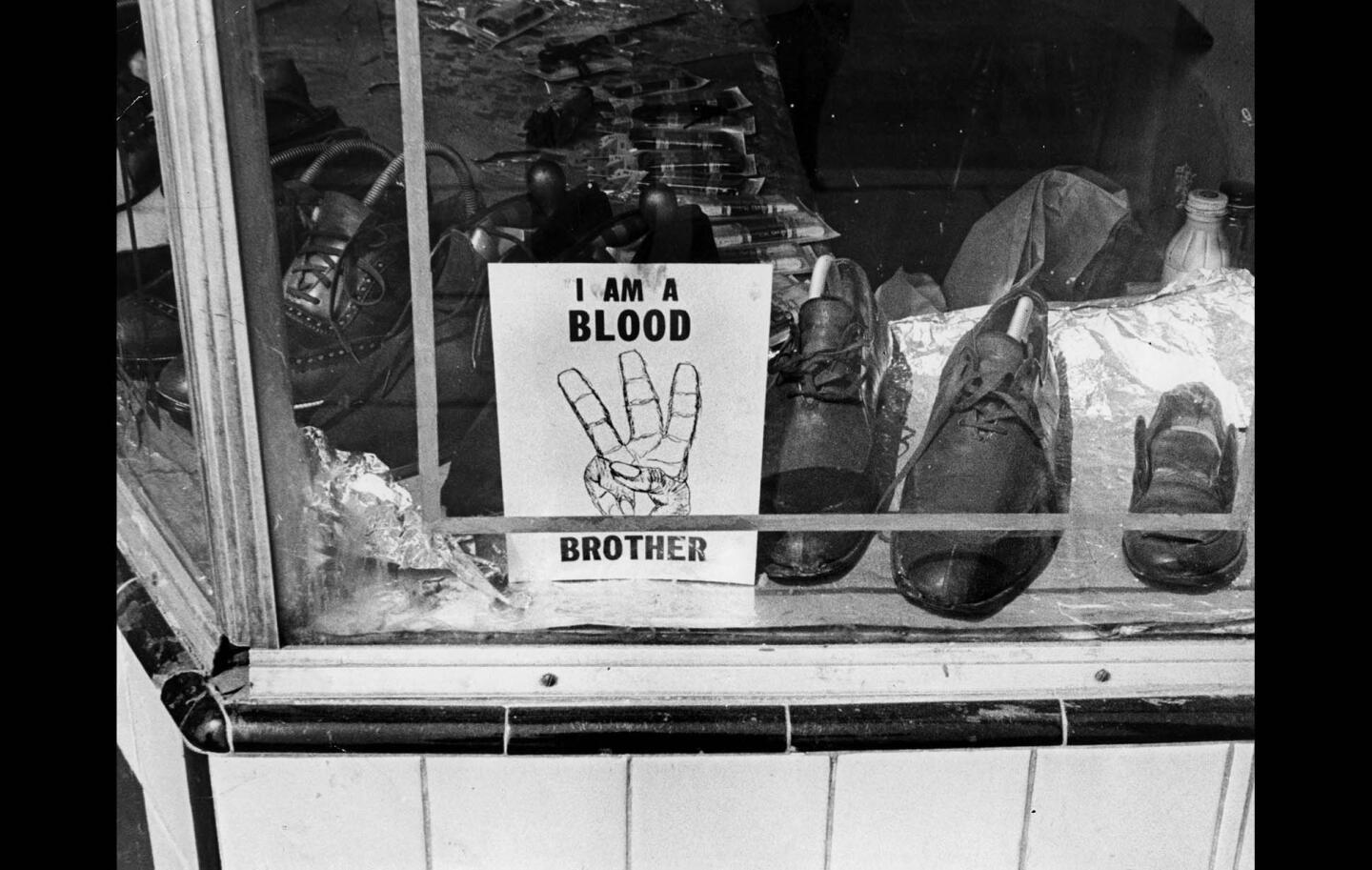
August 1965: A sign in a store window indicates the business is owned by a black man. During the Watts riots, the signs were sometimes ignored and the businesses were damaged by rioters.
(William Murphy / Los Angeles Times)Advertisement
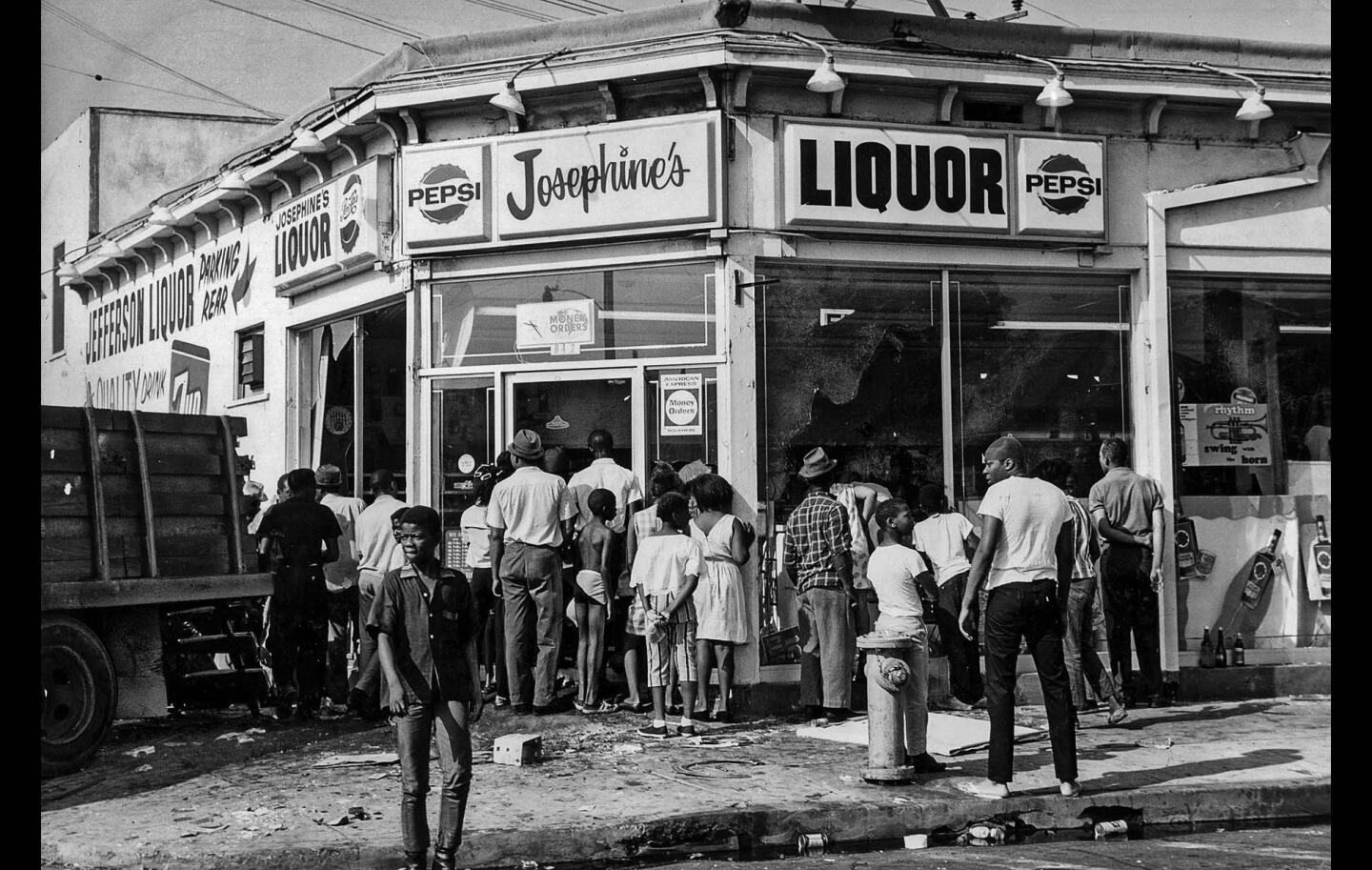
Aug. 14, 1965: A truck backs up in front of a store at 908 E. Jefferson Blvd., where looters were helping themselves during the Watts riots.
(R. L. Oliver / Los Angeles Times)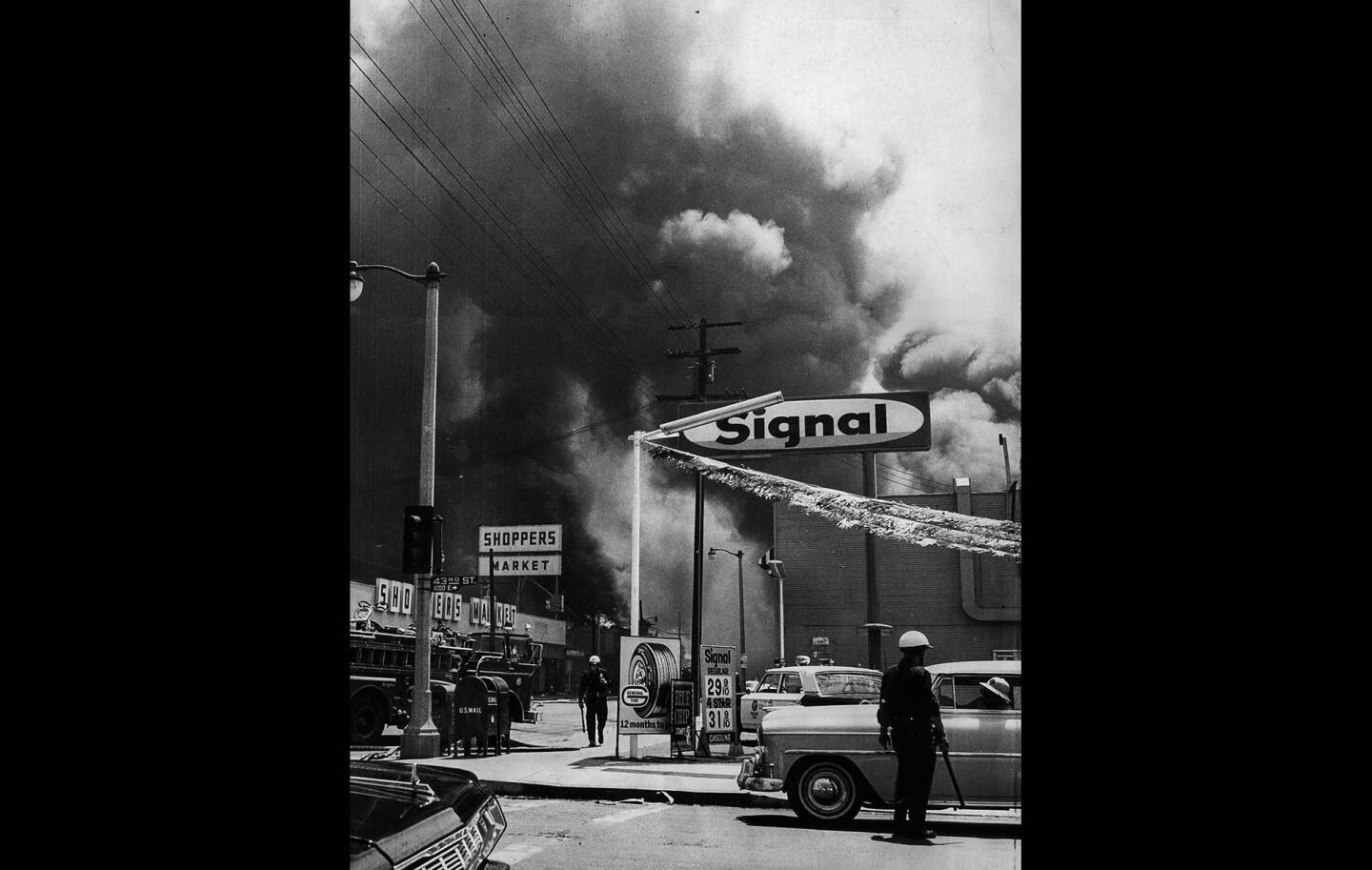
Aug. 14, 1965: Smoke from a row of burning buildings on Central Avenue, south of 43rd Street, darkens the sky during the Watts riots.
(Ray Graham / Los Angeles Times)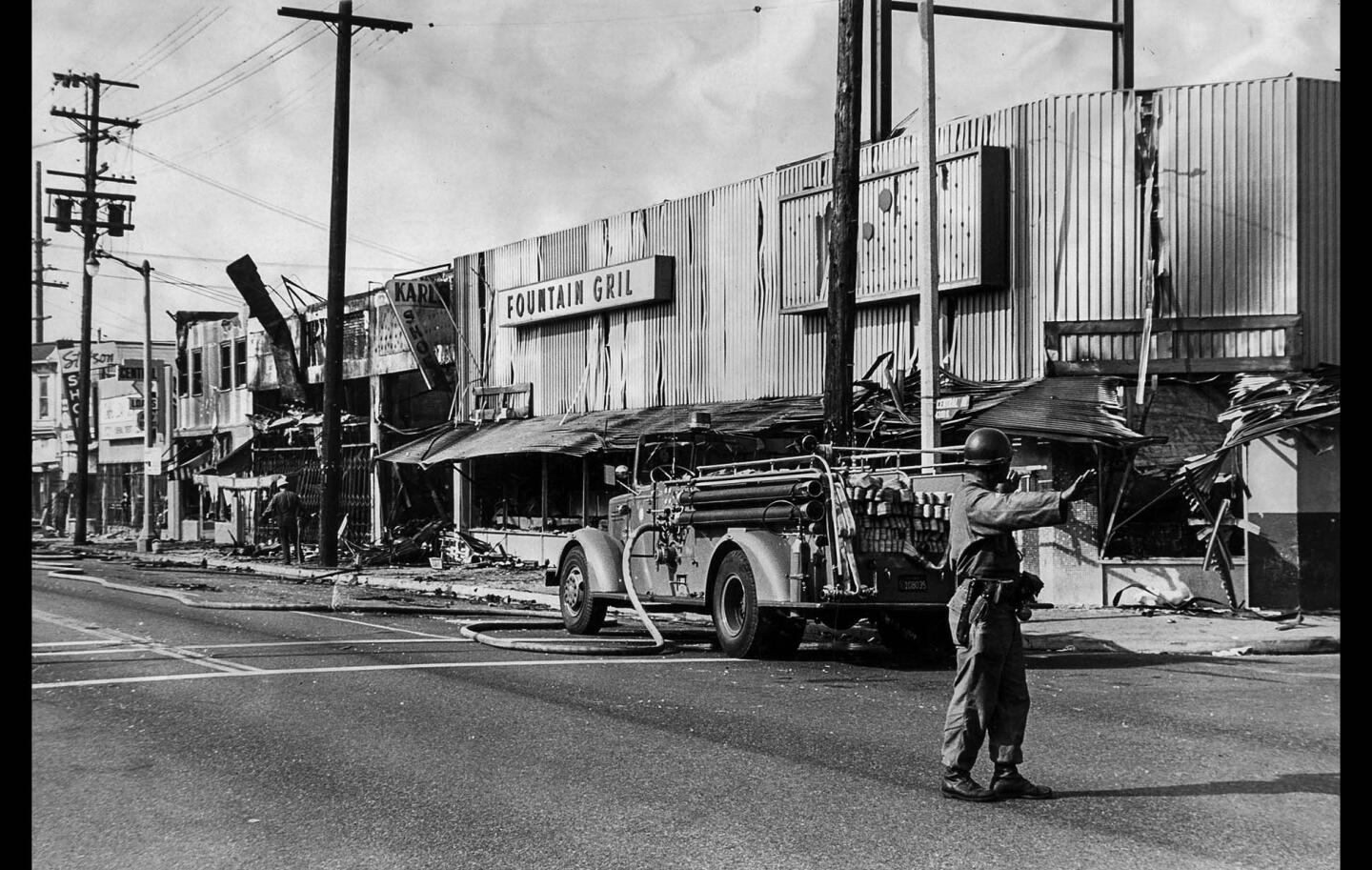
Aug. 15, 1965: A fire truck and a National Guardsman can be seen on Central Avenue after a series of fires set during the Watts riots.
(Ray Graham / Los Angeles Times)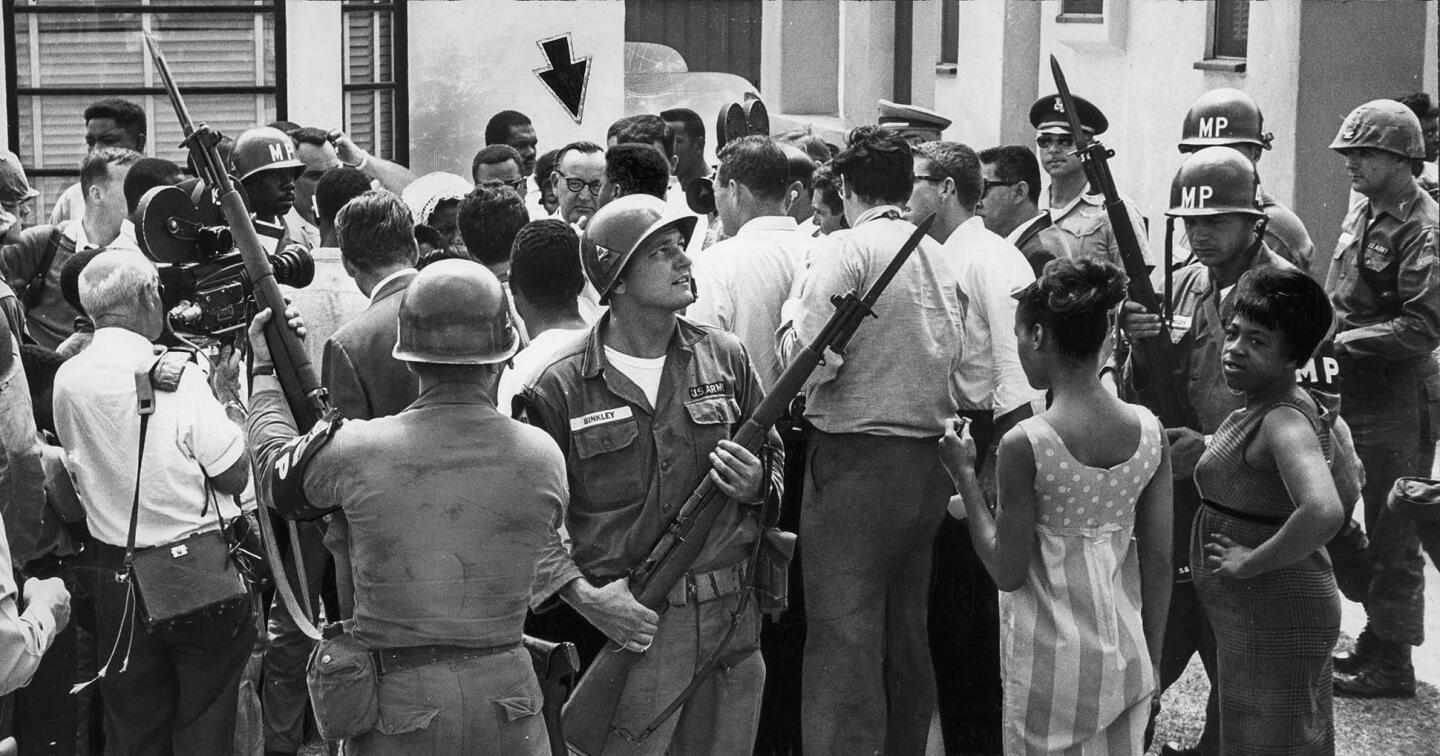
Aug. 15, 1965: Local residents and journalists converge on California Gov.Pat Brown, under arrow, as he arrives at Jacob Riis High School during the Watts riots to have lunch with high-ranking National Guard officers.
(Bill Murphy / Los Angeles Times)Advertisement
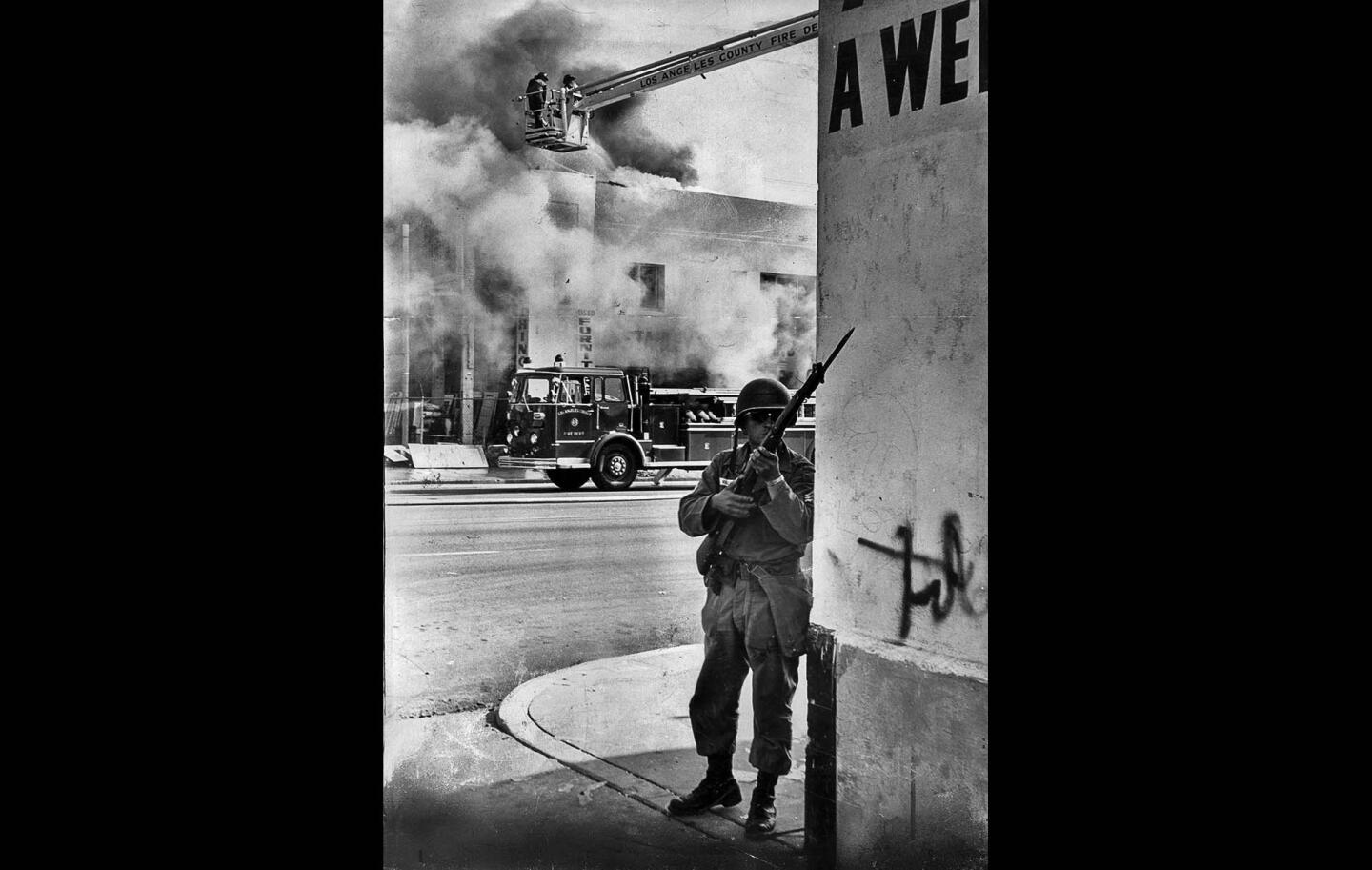
Aug. 15, 1965: A National Guardsman watches for snipers as firefighters battle a blaze at a furniture store during the Watts riots.
(Ray Graham / Los Angeles Times)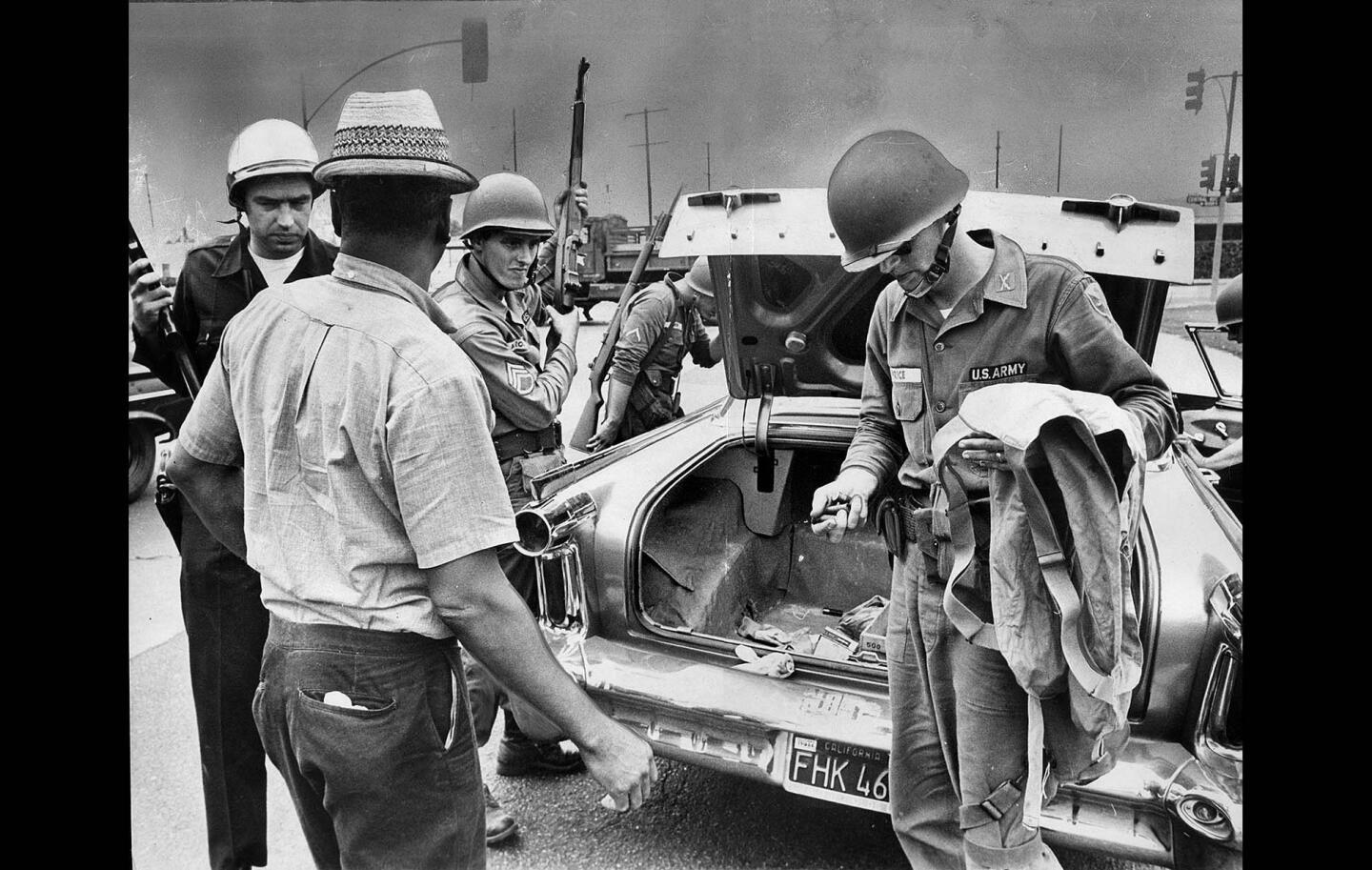
Aug. 16, 1965: A car is searched at a roadblock at 103rd Street and Central Avenue by National Guardsmen. Small gauge hunting shotgun shells were returned to the motorist.
(John Malmin / Los Angeles Times)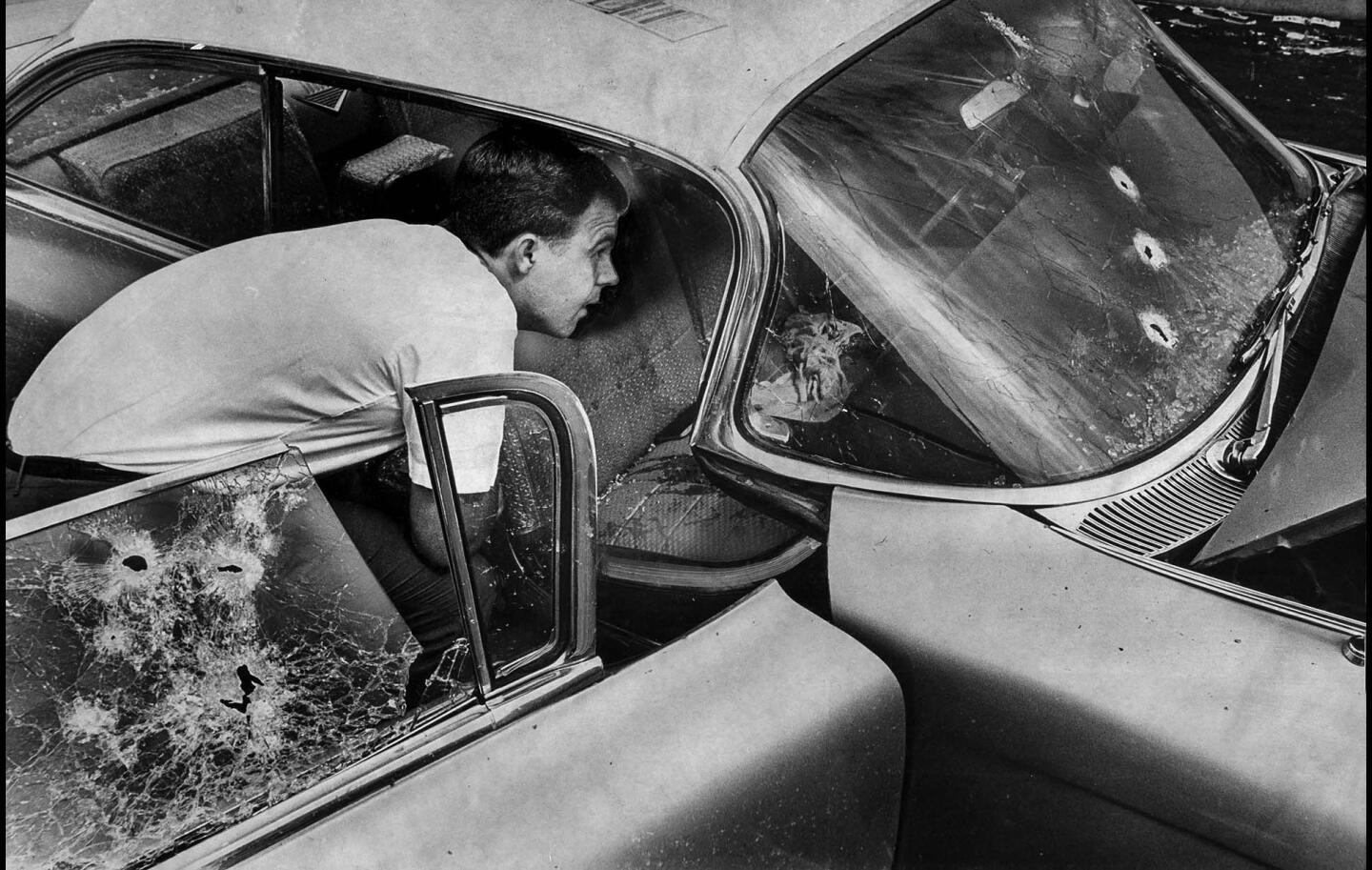
Aug. 16, 1965: A car sprayed with machine gun bullets as its driver attempted to run a roadblock is abandoned at the side of Compton Avenue. The driver of the car was killed.
(John Malmin / Los Angeles Times)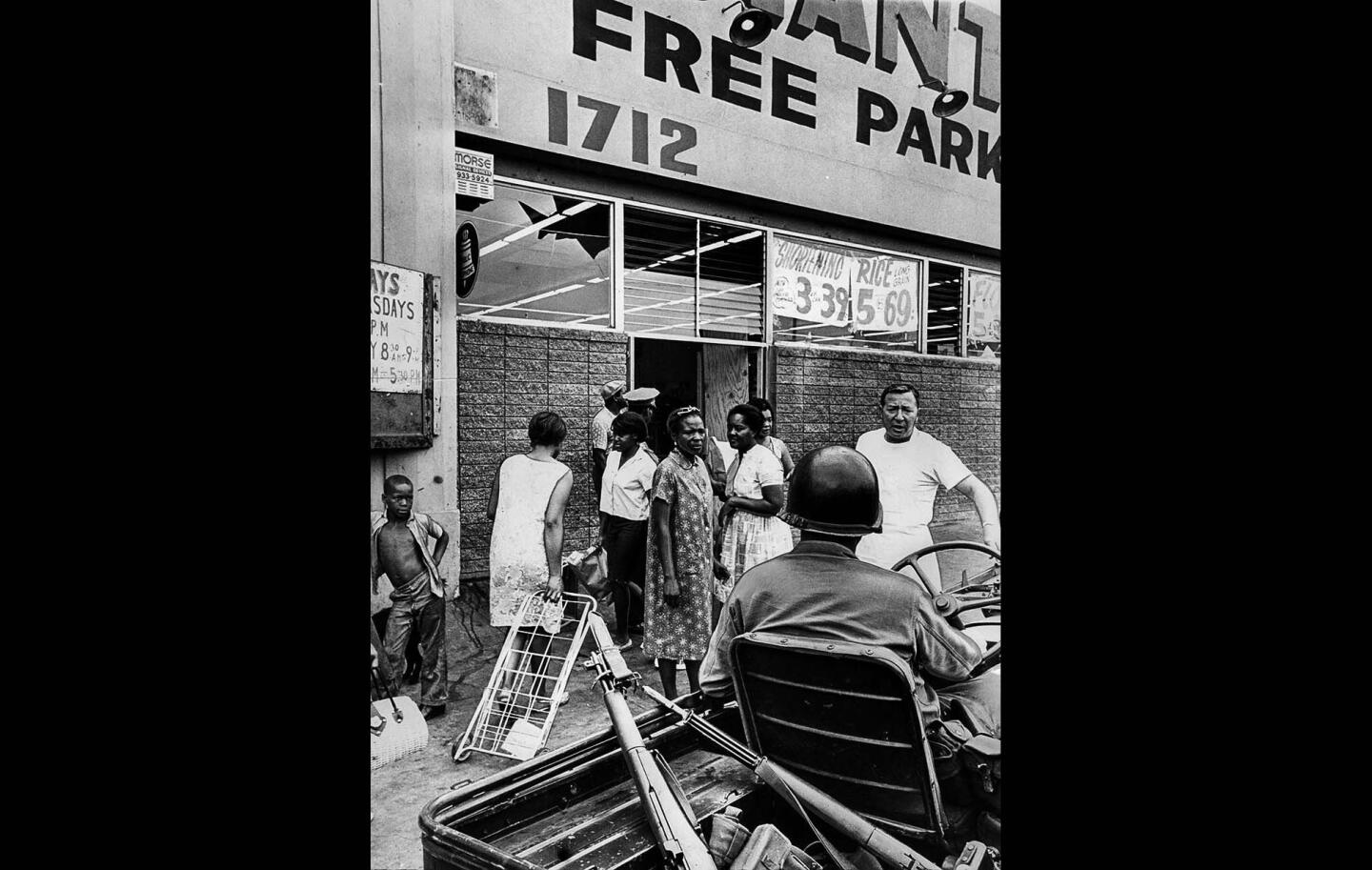
Aug. 16, 1965: Only women were allowed to enter the Giant Food Market at 1712 E. 103rd St. after it reopened during the Watts riots. The clerks carried guns. The man facing the camera is store manager Carl Margolis.
(John Malmin / Los Angeles Times)Advertisement
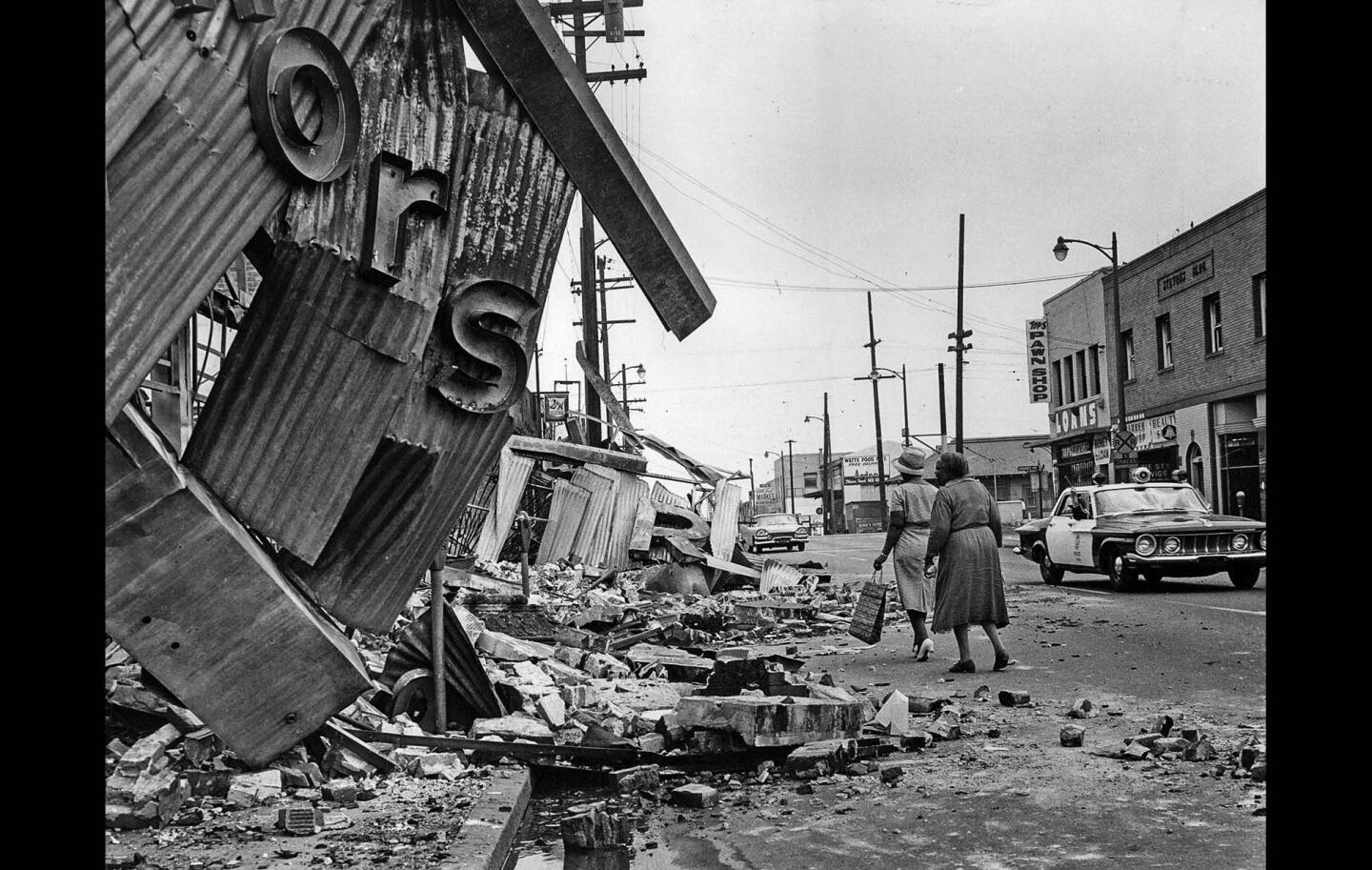
Aug. 16, 1965: Two women walk by the ruins of a store on 103rd Streets near Maie Avenue in the center of the riot area.
(R. L. Oliver / Los Angeles Times)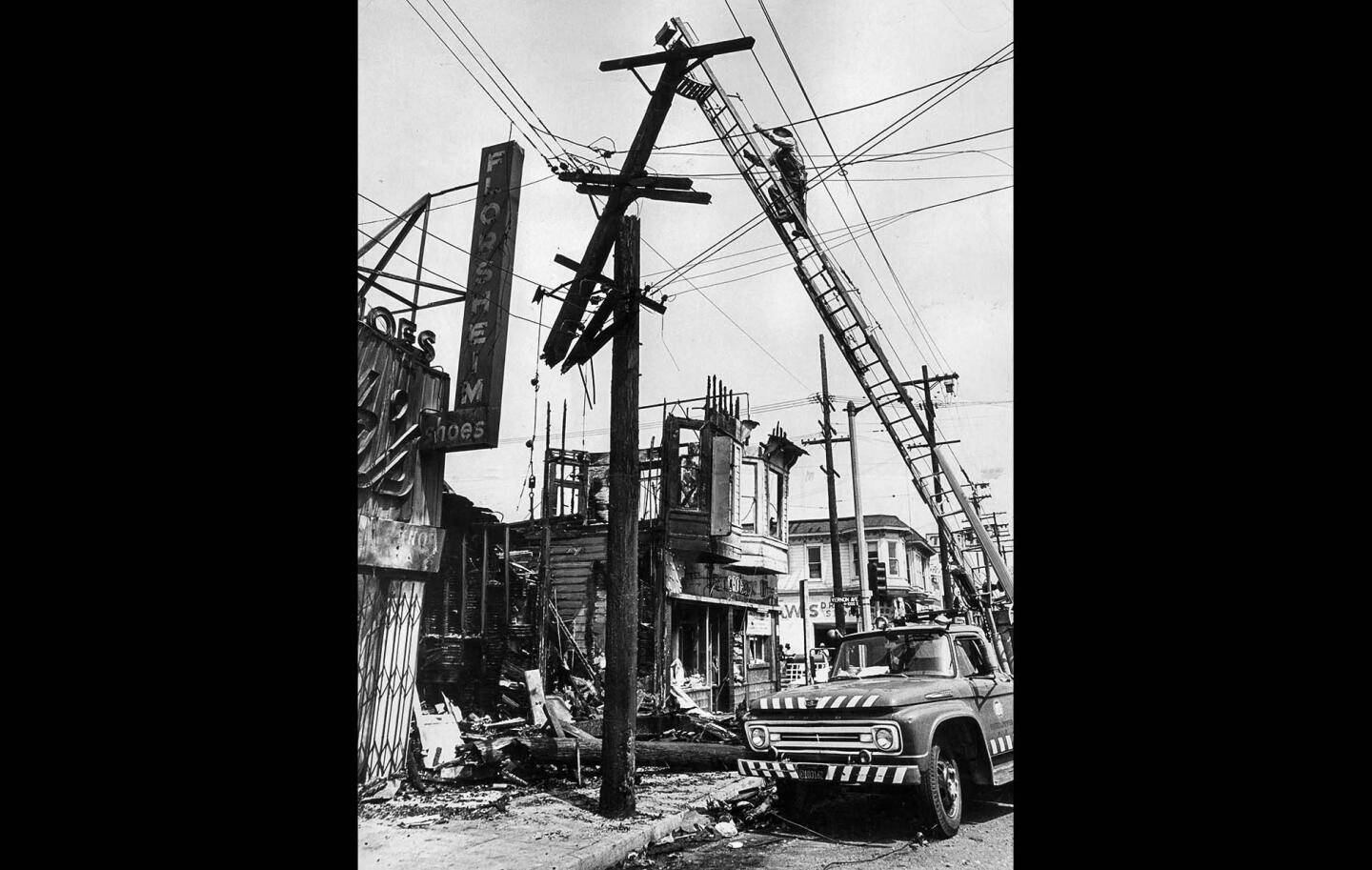
Aug. 17, 1965: An L.A. Department of Water and Power lineman works among wires on poles burned and snapped apart by fires during the Watts riots.
(John Malmin / Los Angeles Times)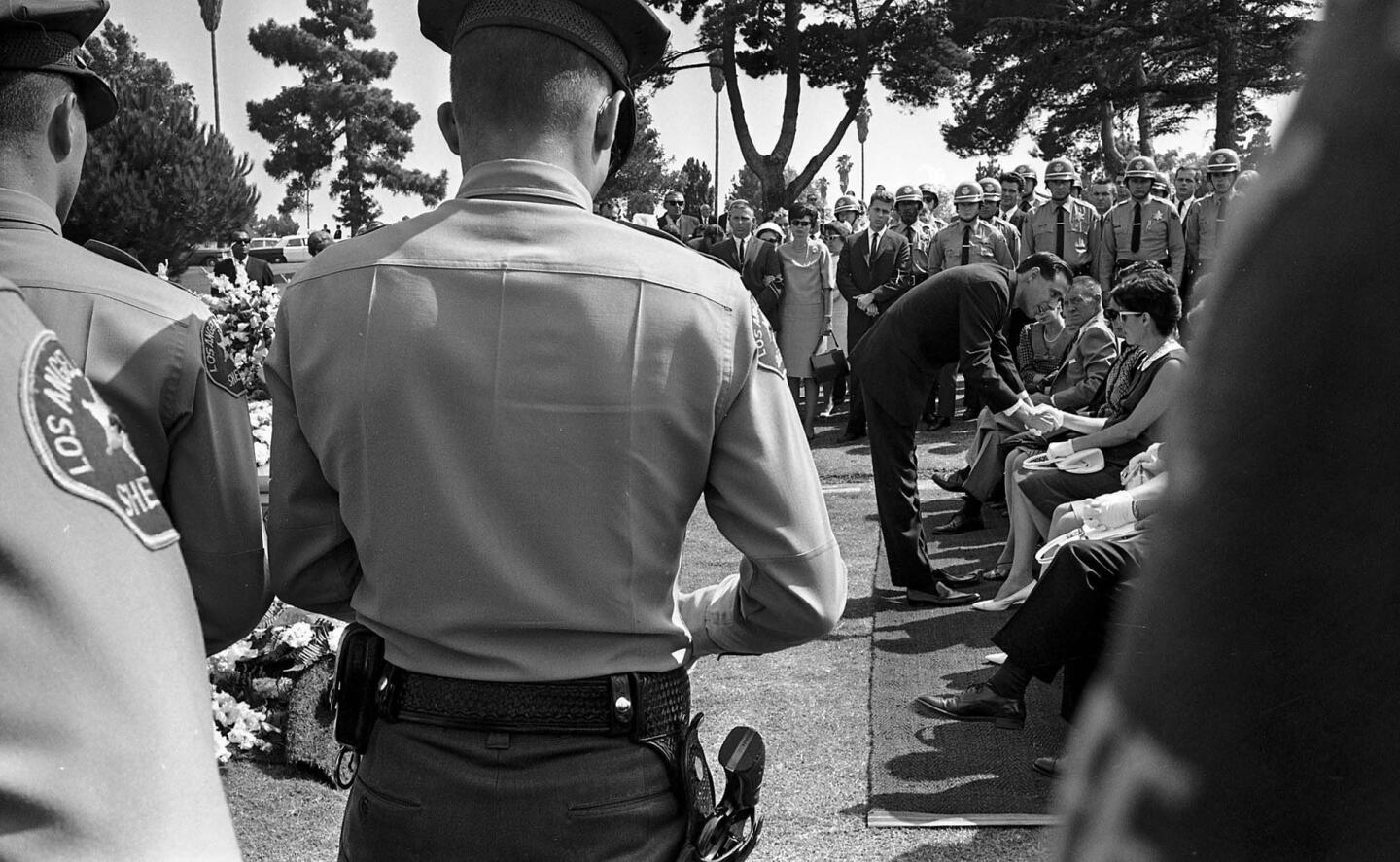
Aug. 17, 1965: The widow of Ronald E. Ludlow, a sheriff’s deputy killed during the Watts riots, is consoled by the Rev. Lawrence Keene of Crenshaw Christian Church at Inglewood Park Cemetery.
(Steve Fontanini / Los Angeles Times)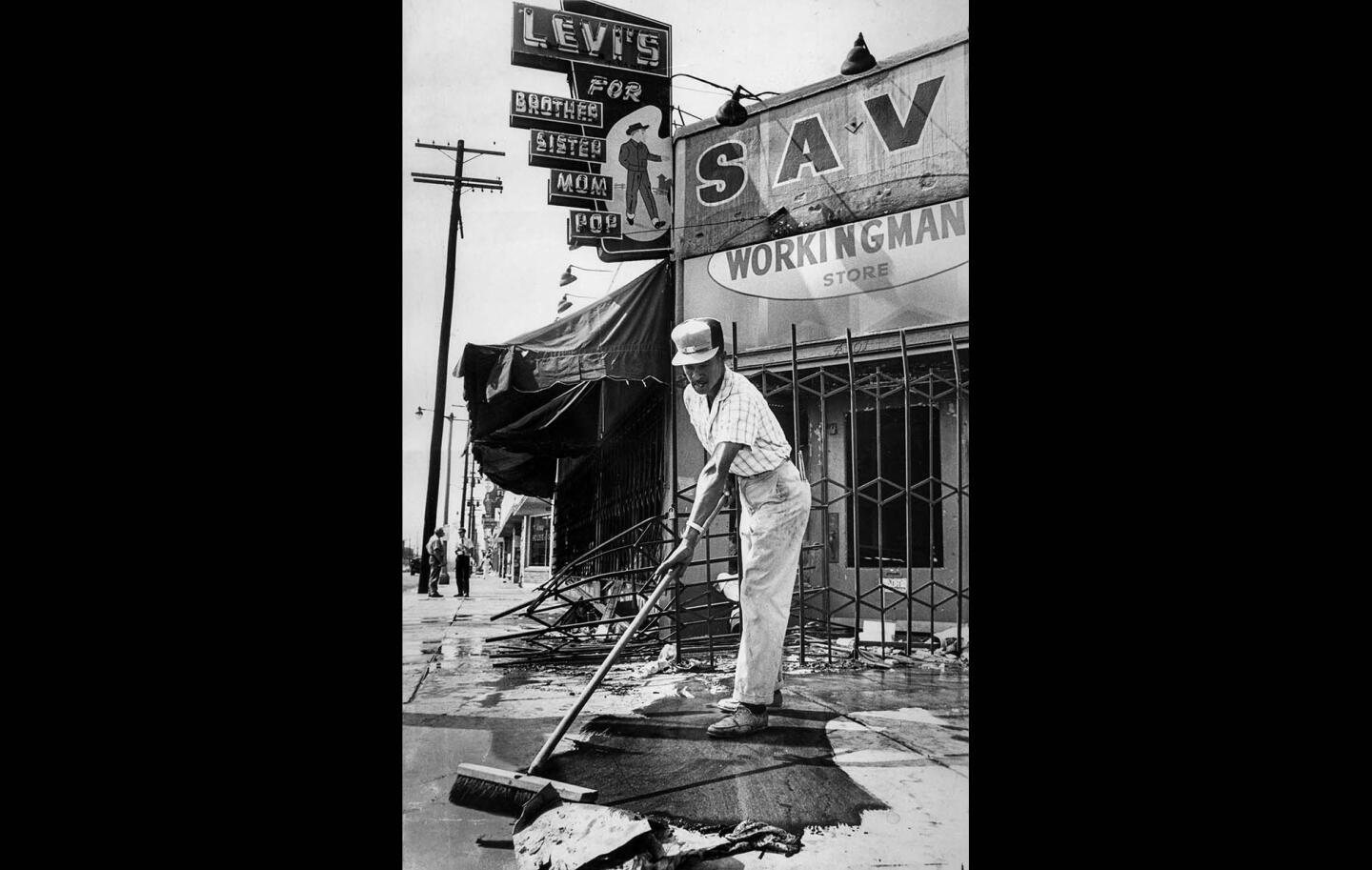
Aug. 17, 1965: Charles Vance sweeps up the litter in front of stores at 45th Street and Central Avenue after the Watts riots.
(John Malmin / Los Angeles Times)Advertisement
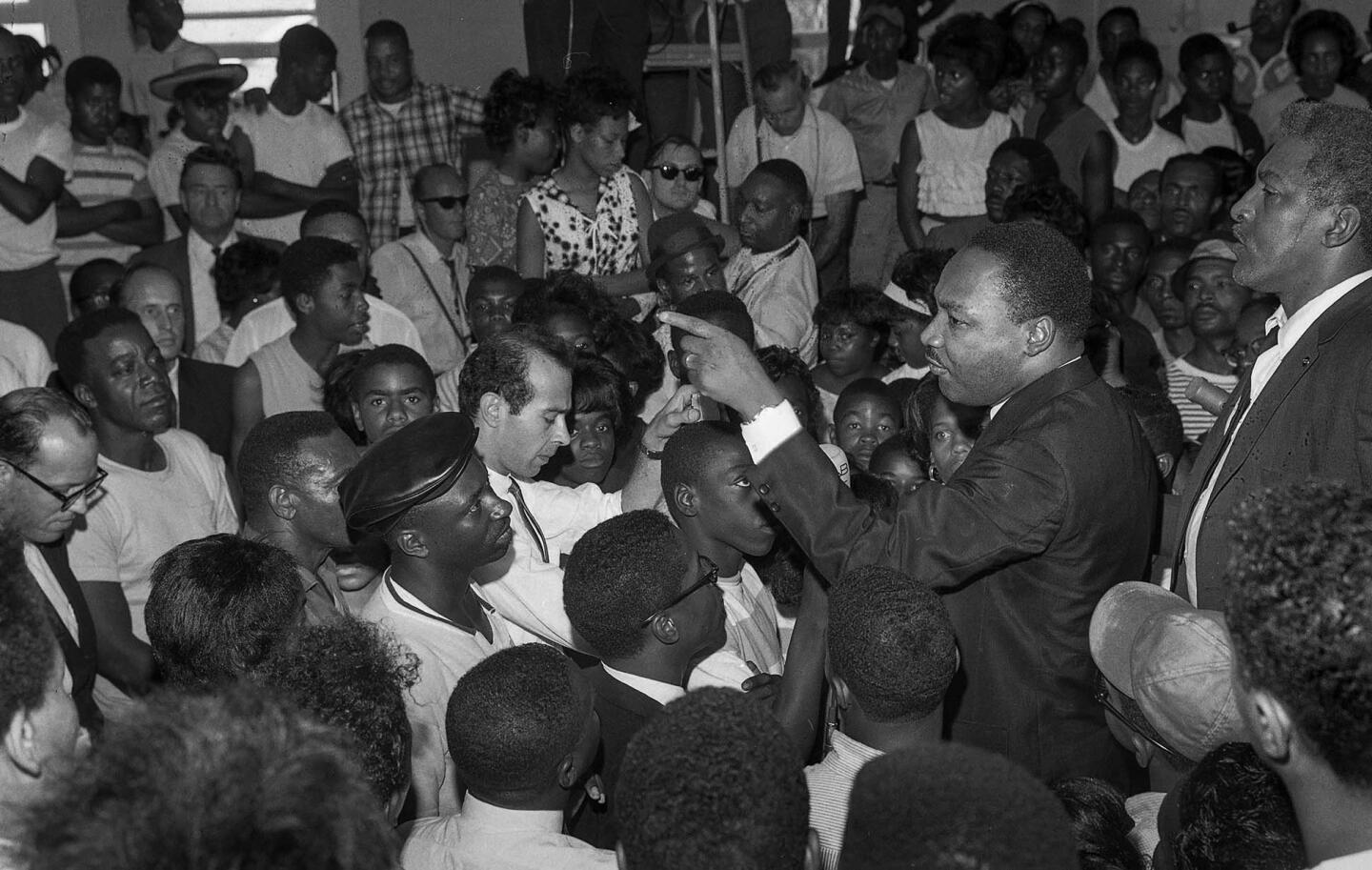
Aug. 18, 1965: Dr. Martin Luther King Jr. speaks during a meeting of the Westminster Neighborhood Assn. about the Watts riots.
(Don Cormier / Los Angeles Times)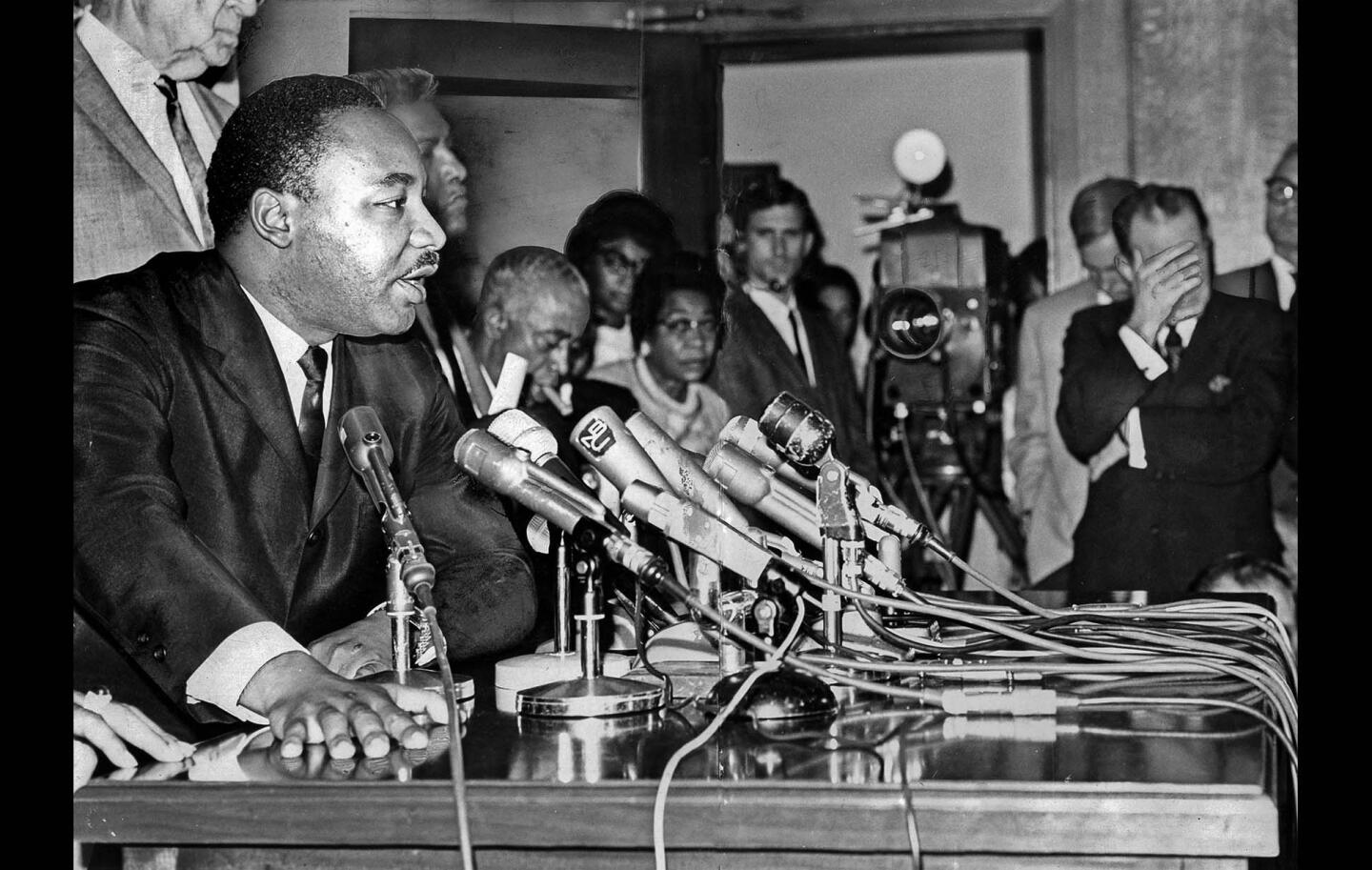
Aug. 19, 1965: Dr. Martin Luther King Jr. answers reporters’ questions after a stormy meeting with then-Los Angeles Mayor Samuel W. Yorty, shown covering his eyes at right.
(Larry Sharkey / Los Angeles Times)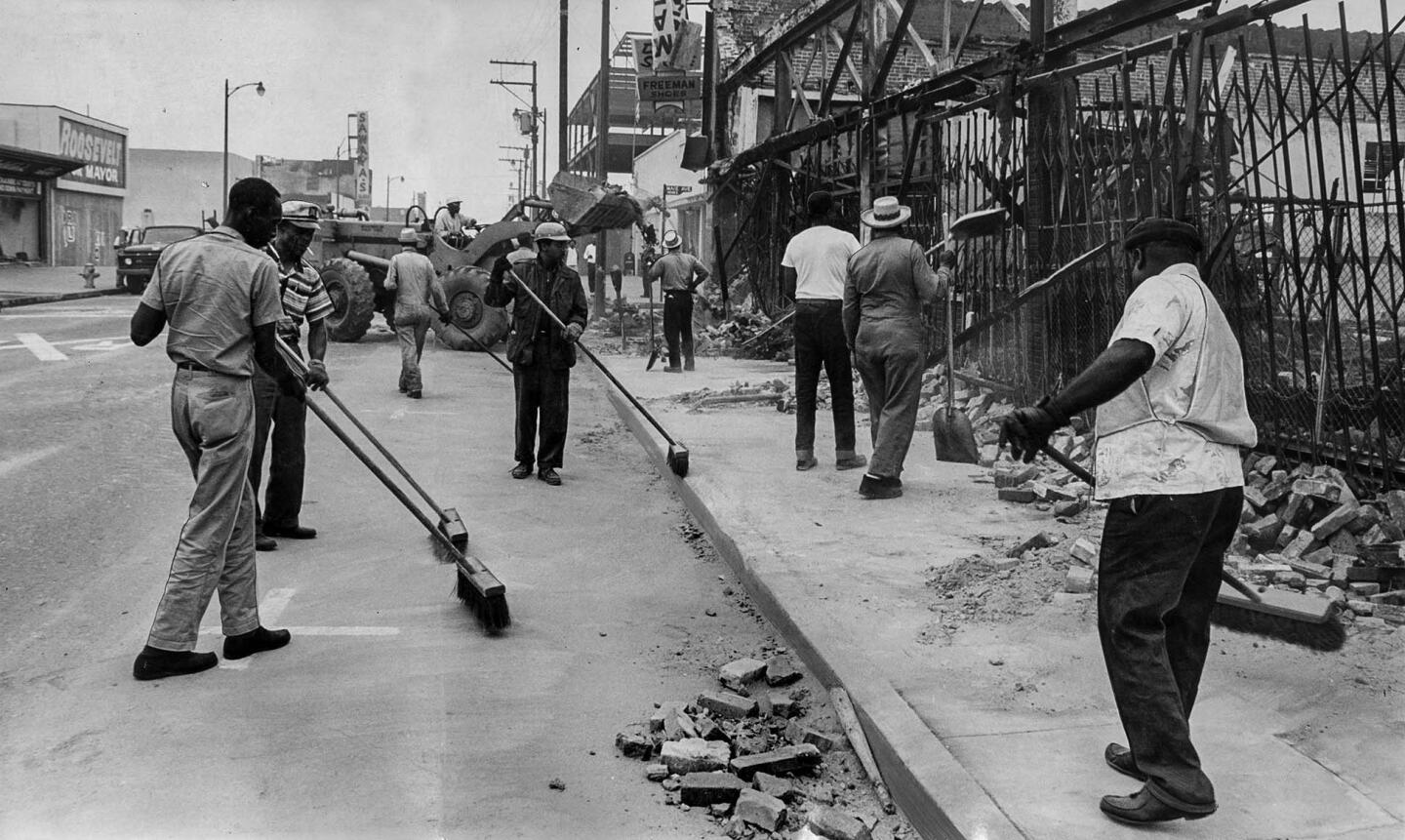
Aug. 20, 1965: A Department of Public Works crew cleans up at 103rd Street and Maie Avenue after the Watts riots.
(John Malmin / Los Angeles Times)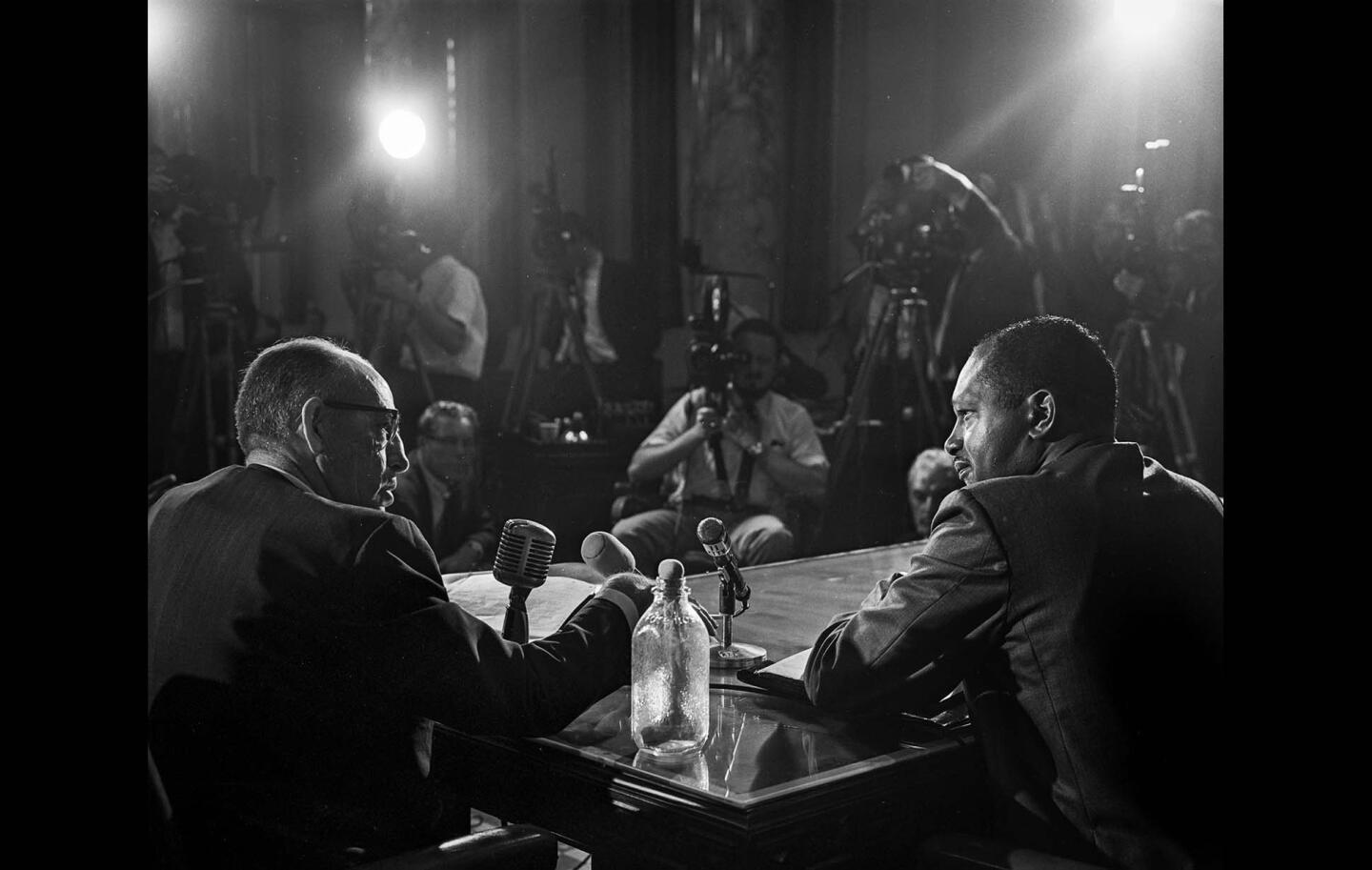
Sept. 13, 1965: Los Angeles Police Chief William Parker, left, faces City Councilman Tom Bradley as he testifies before a City Council committee on the sequence of events that led up to the Watts riots. On the table is a Molotov cocktail that Parker said was found during the riots.
(John Malmin / Los Angeles Times)Advertisement
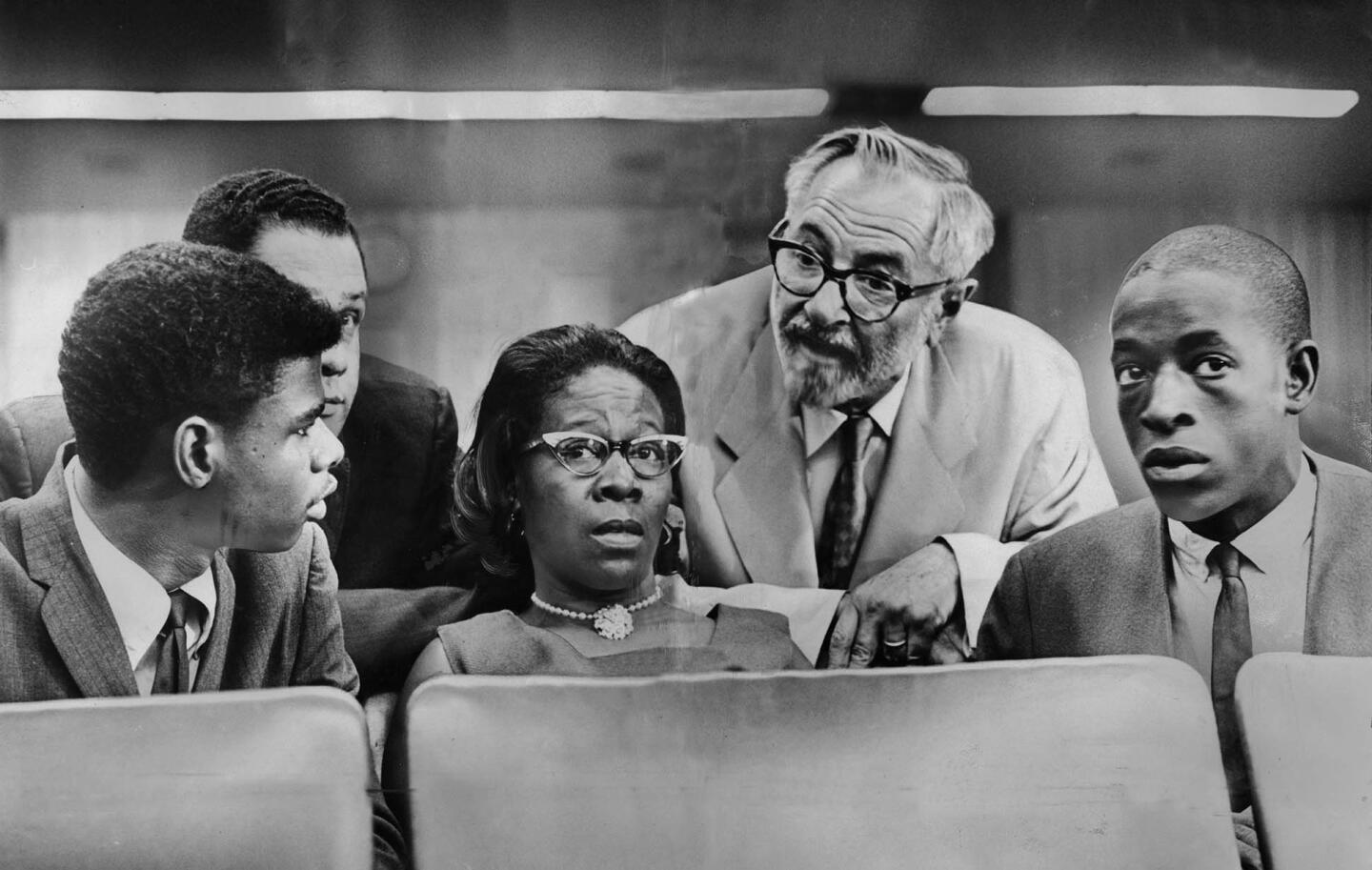
Sept. 15, 1965: Marquette Frye, right, whose arrest set off the Watts riots, attends a California Senate fact-finding committee hearing with his brother Ronald, left, and his mother Rena, center, who also was arrested. None of the three testified. In the back are attorneys Stanley R. Malone, left, and A. L. Wirin.
(John Malmin / Los Angeles Times)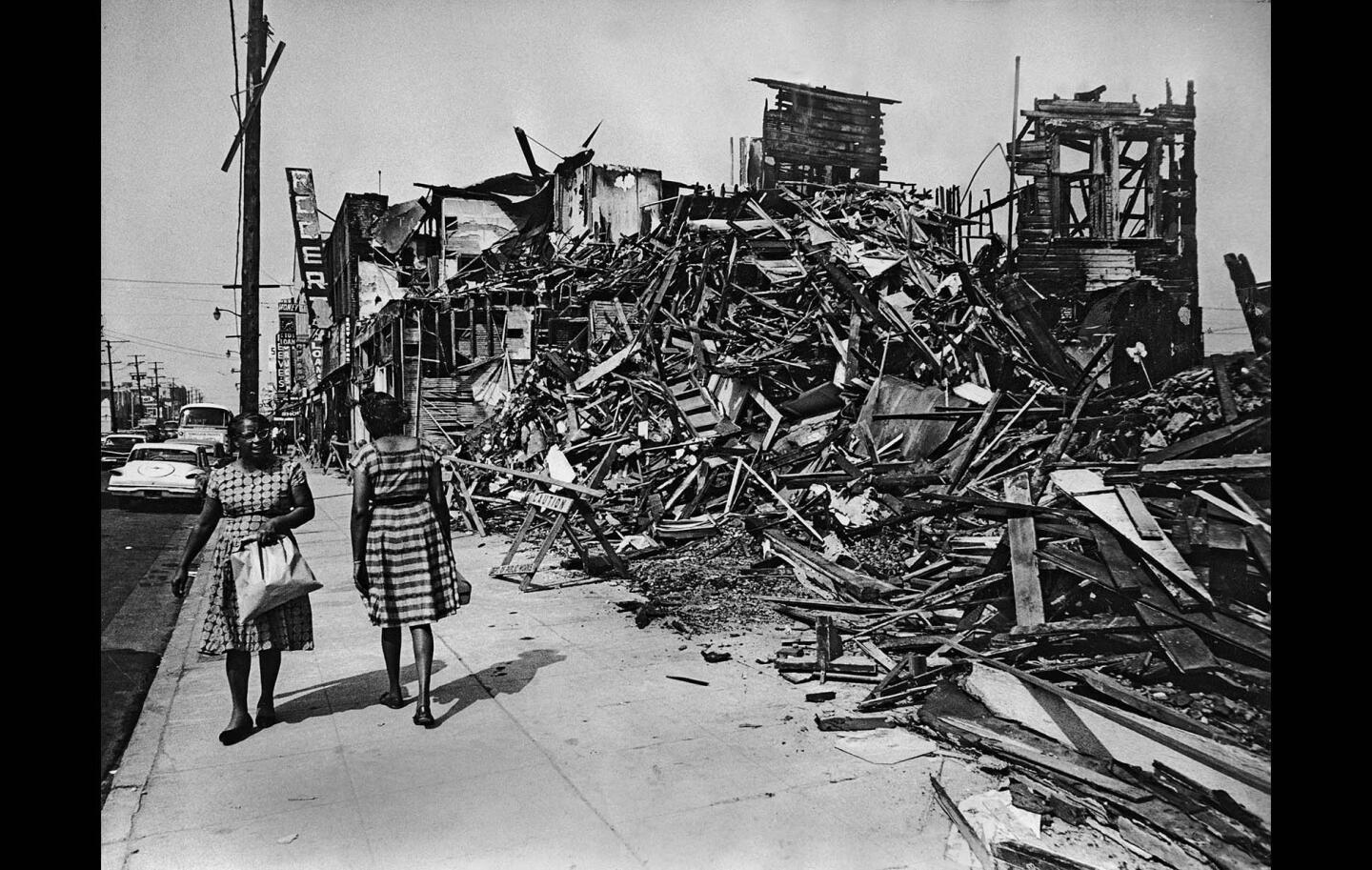
October 1965: Residents walk along 103rd Street in Watts, where rubble is piled up nearly two stories high.
(file photo / Los Angeles Times)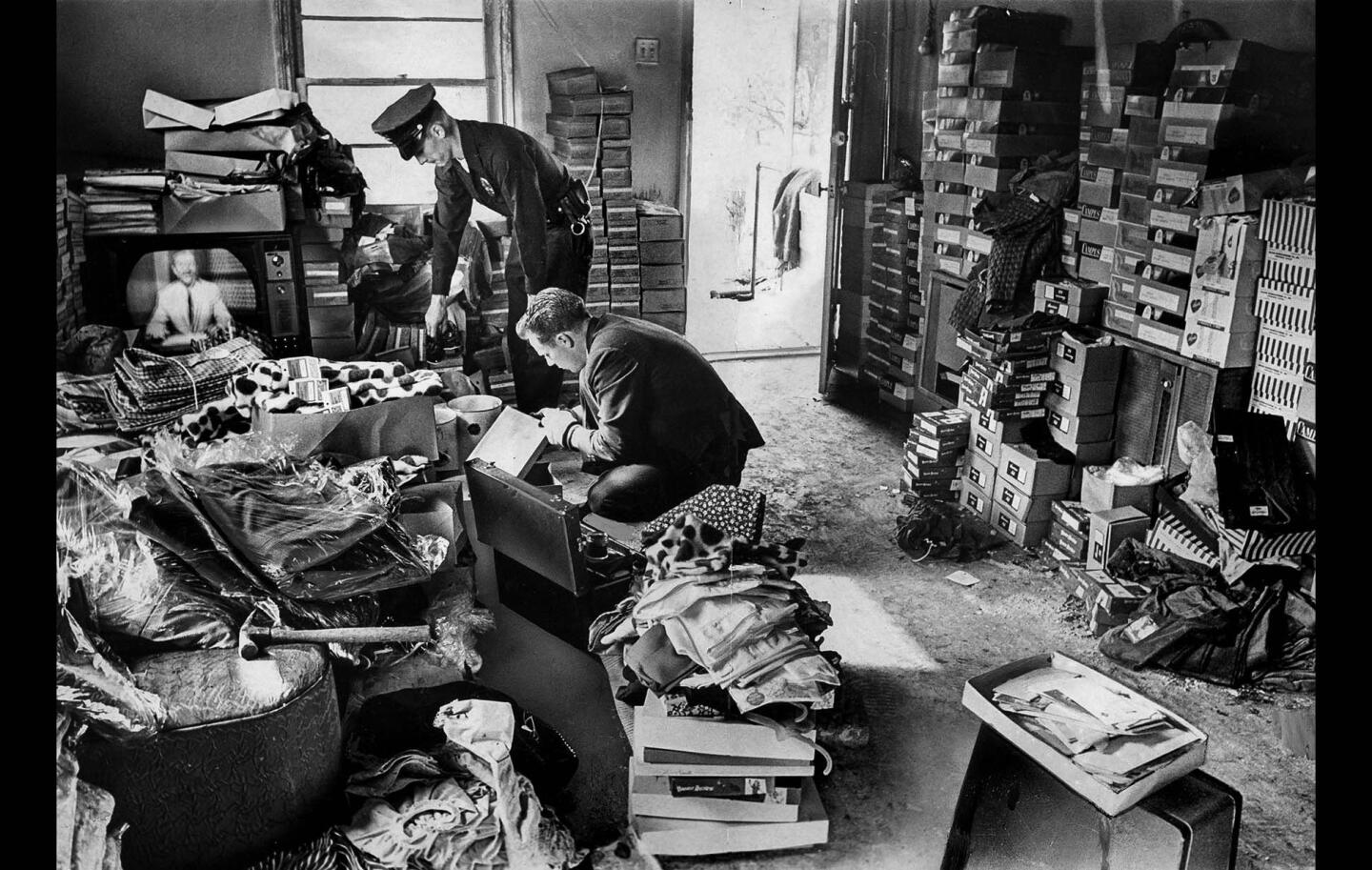
Sept. 20, 1965: Police Officer Clarence Hutchens and Det. Edward Hocking, kneeling, check for fingerprints in a roomful of loot discovered when firefighters responded to a blaze in a home in the 1600 block of West 60th Place. Officers said the items had been taken from stores during the Watts riots. Three trucks were needed to haul away the merchandise.
(John Malmin / Los Angeles Times)


